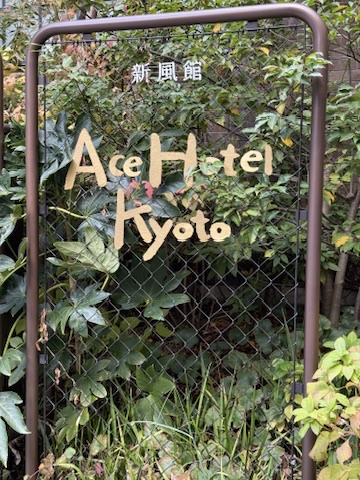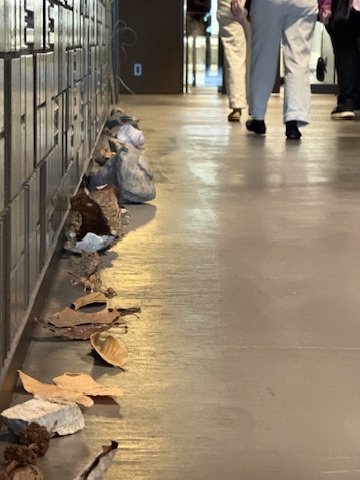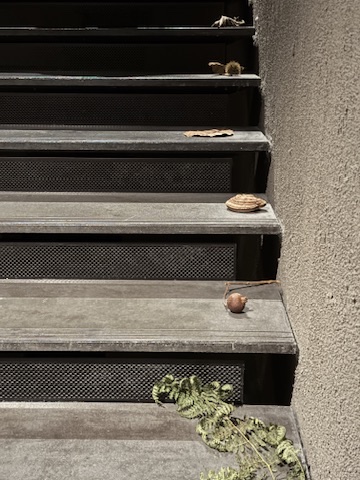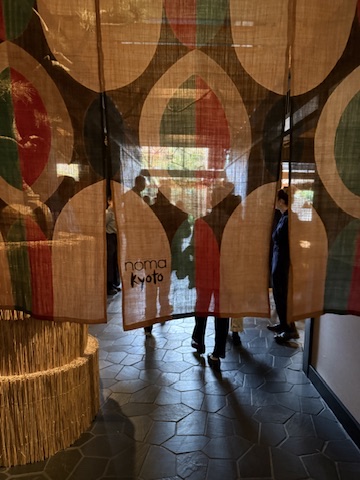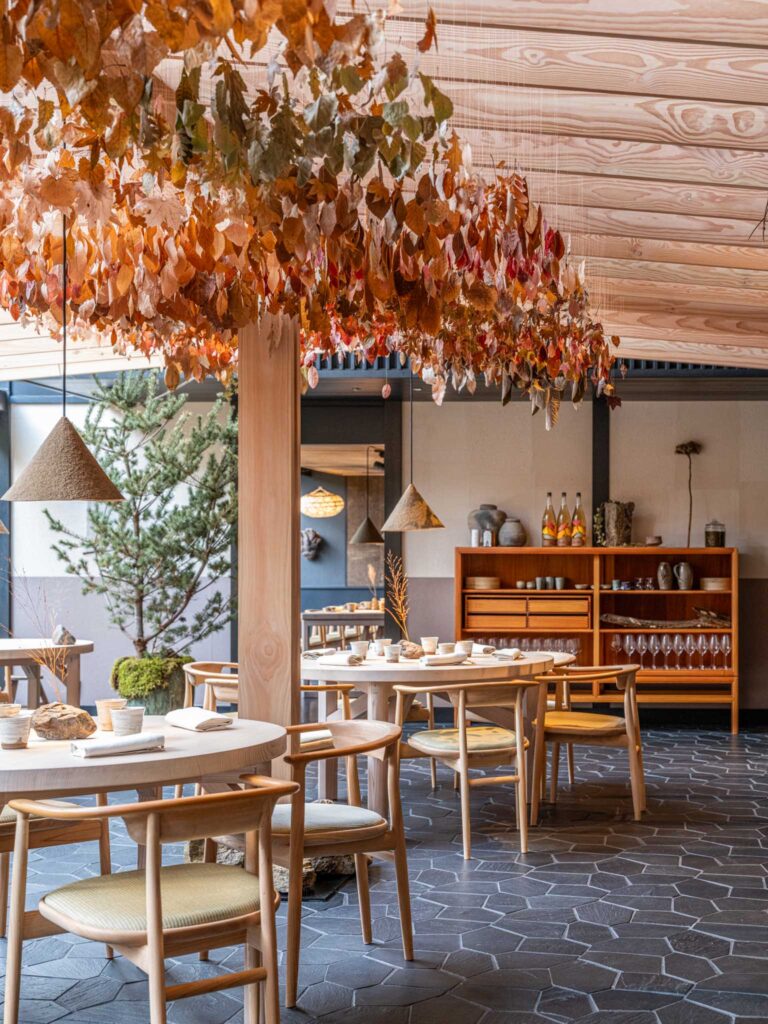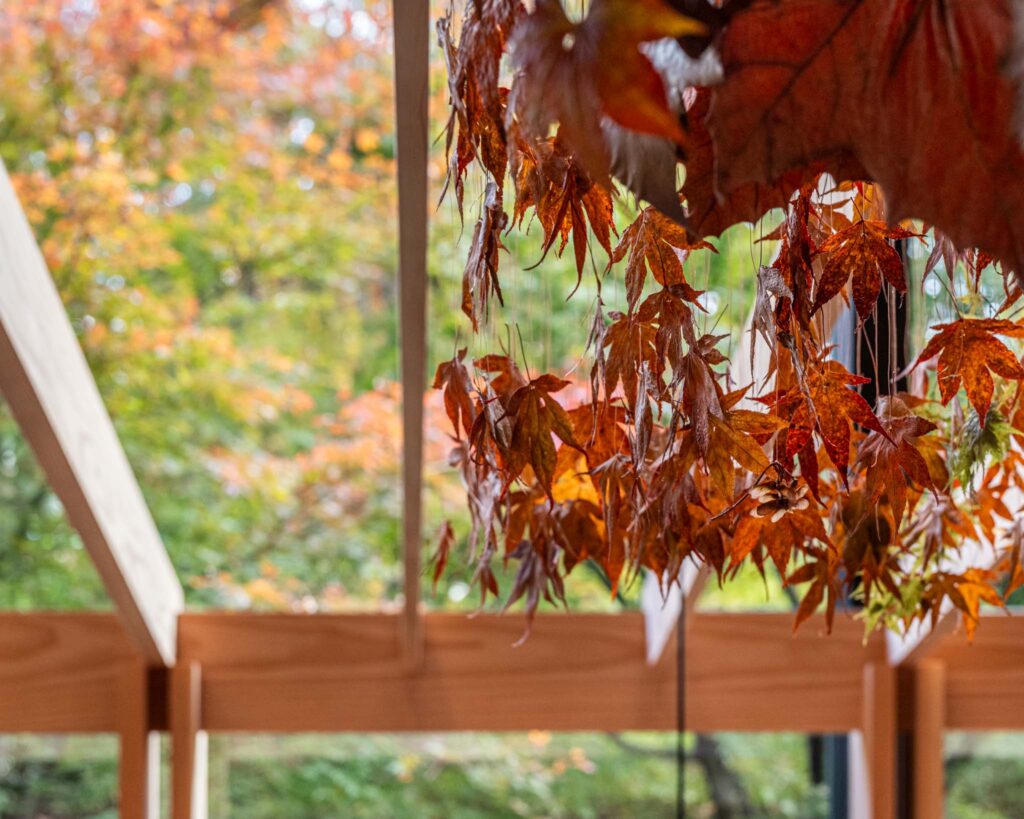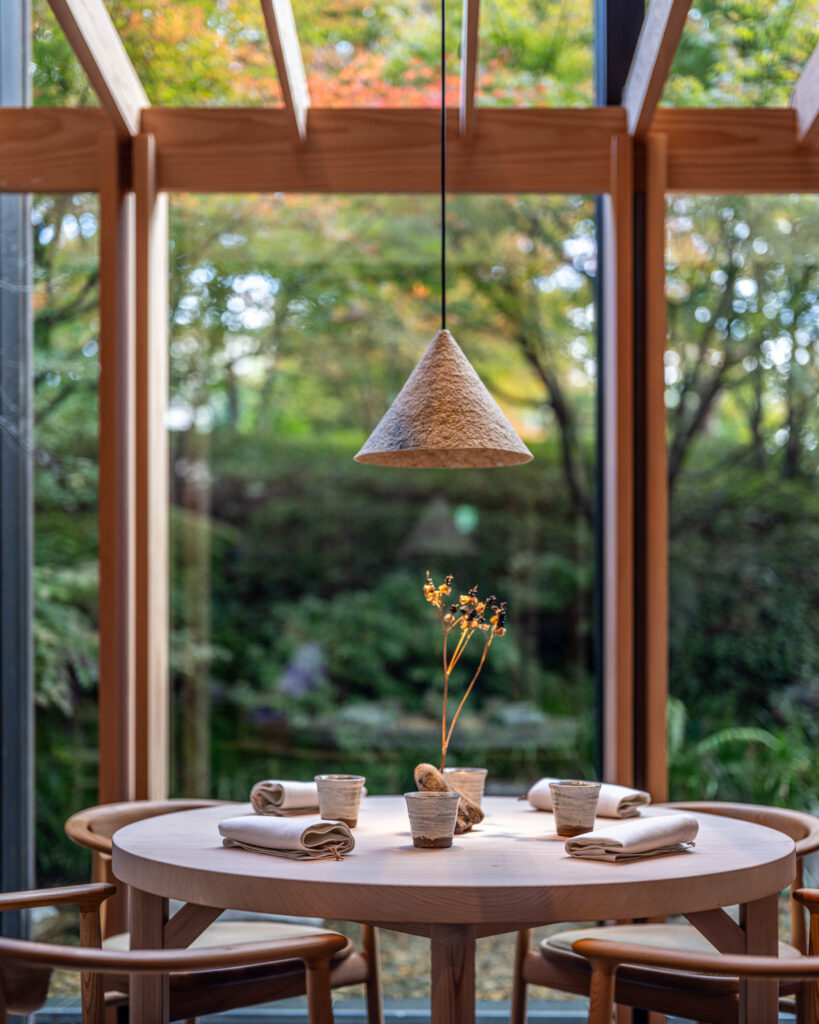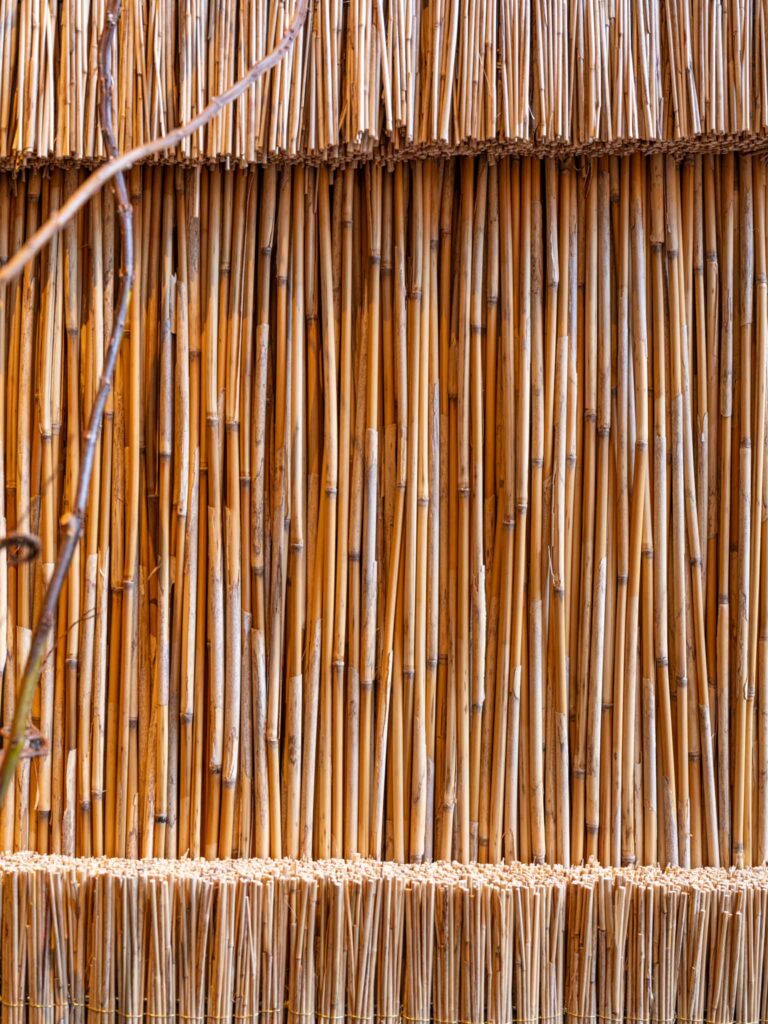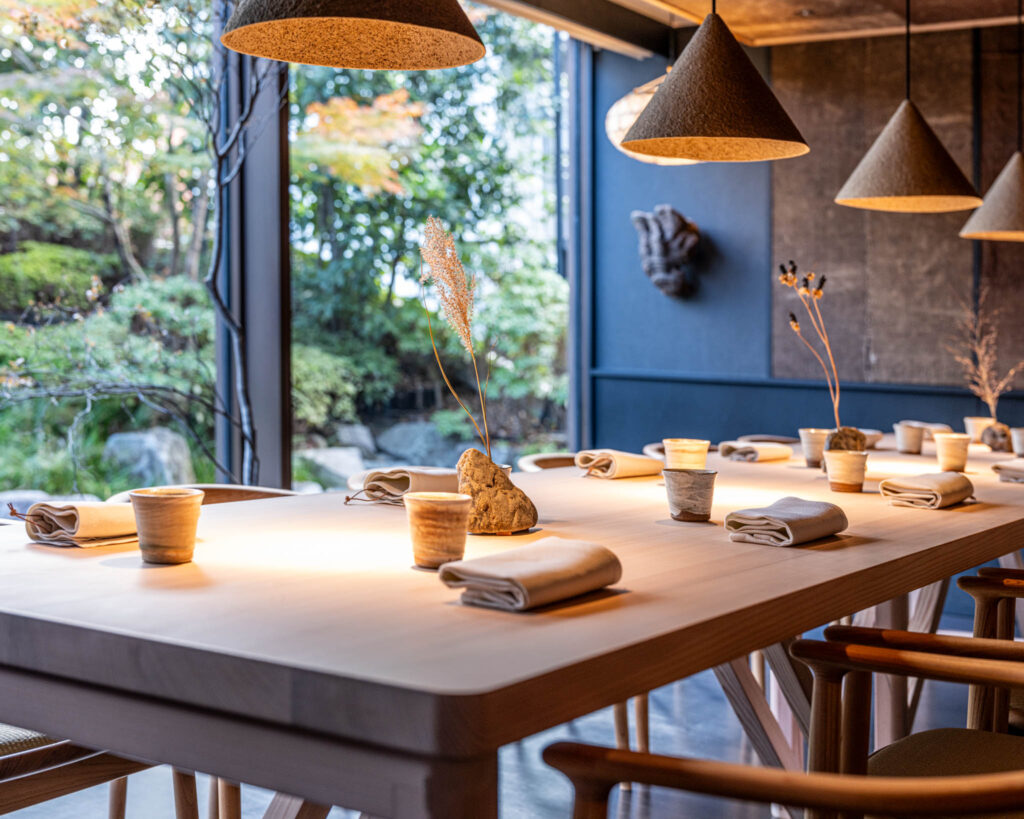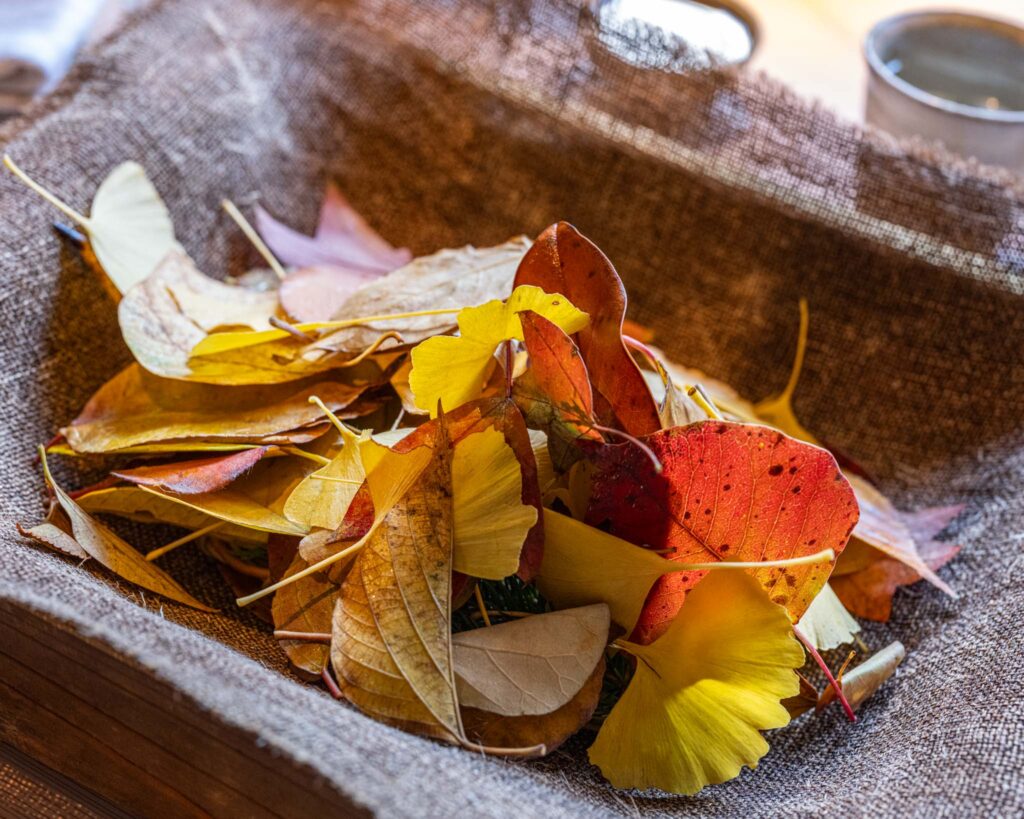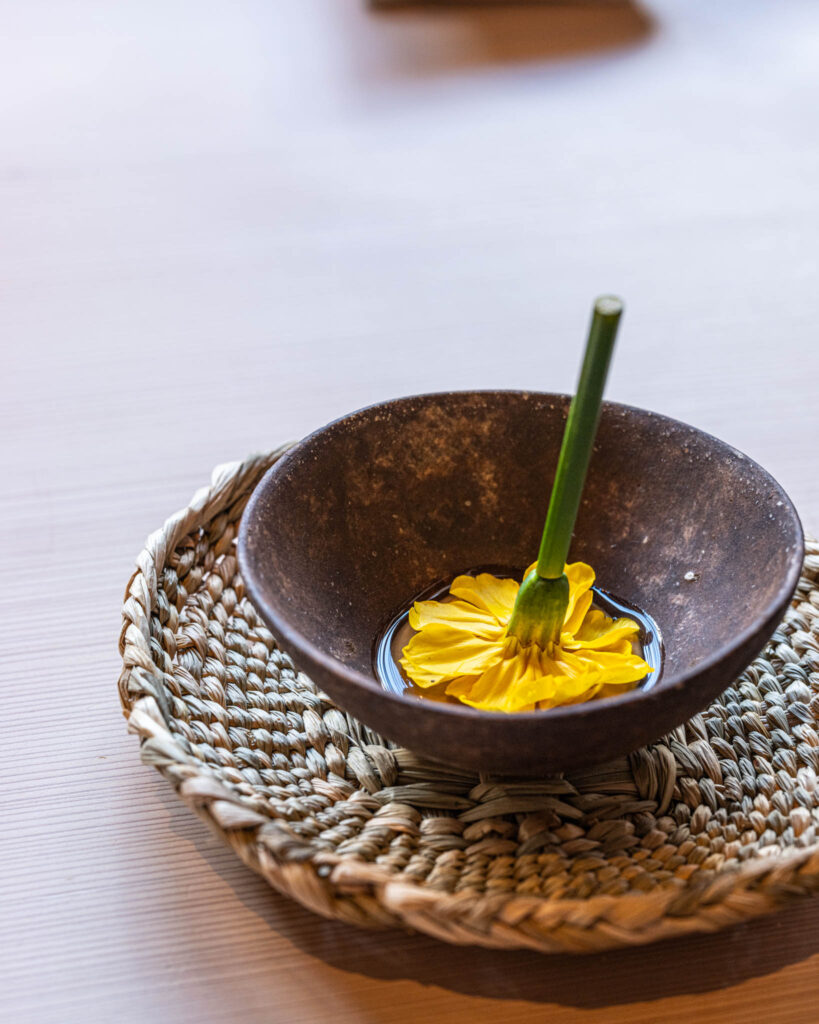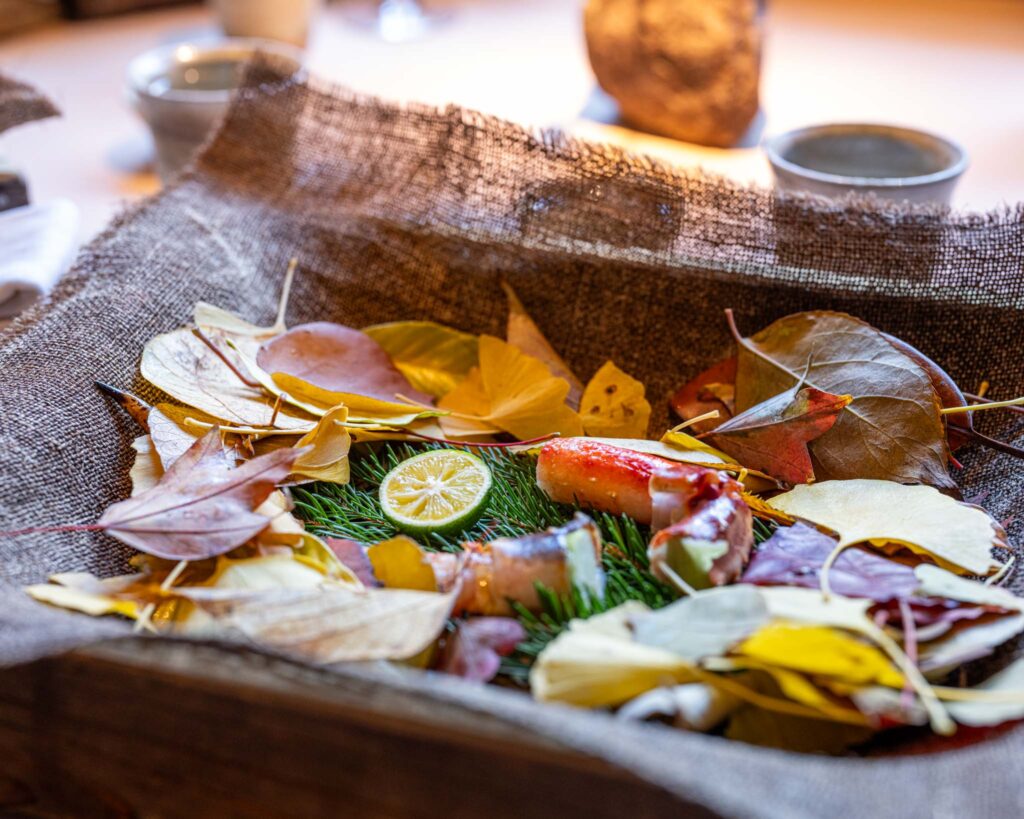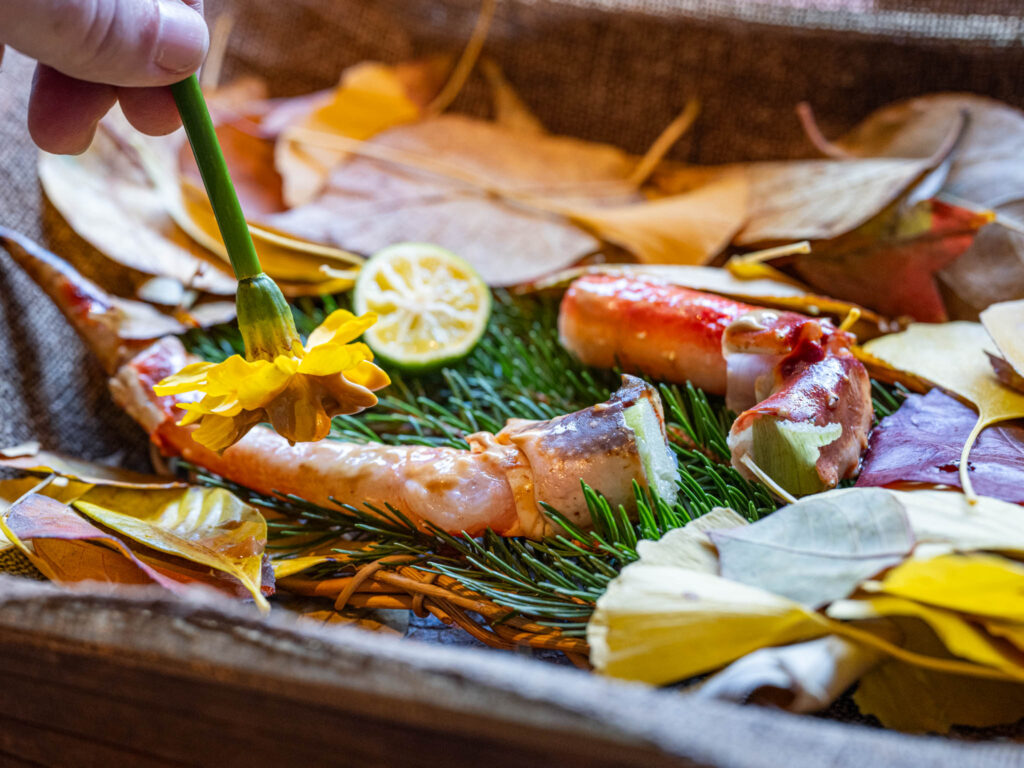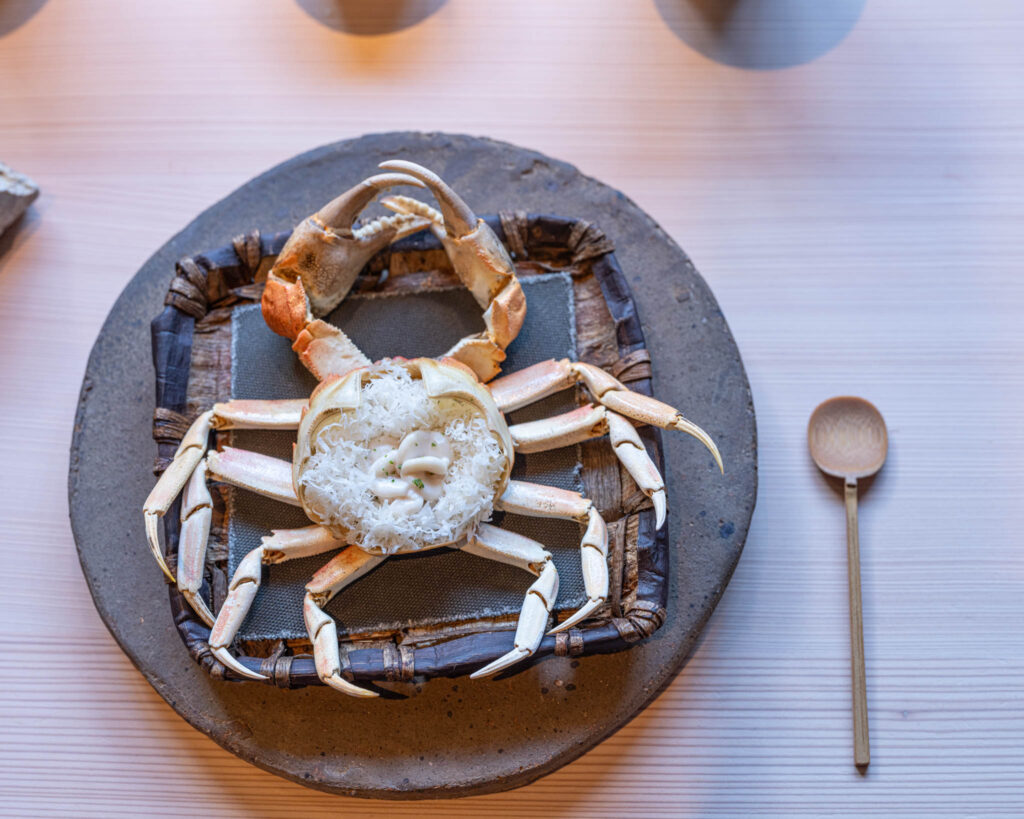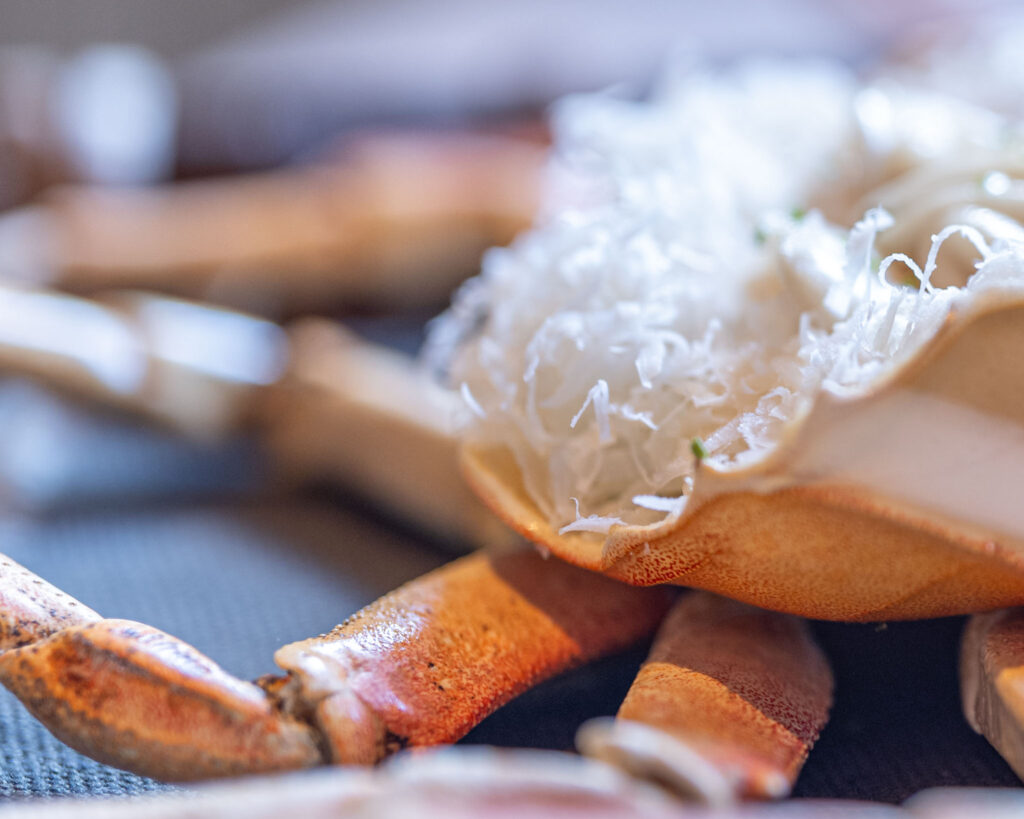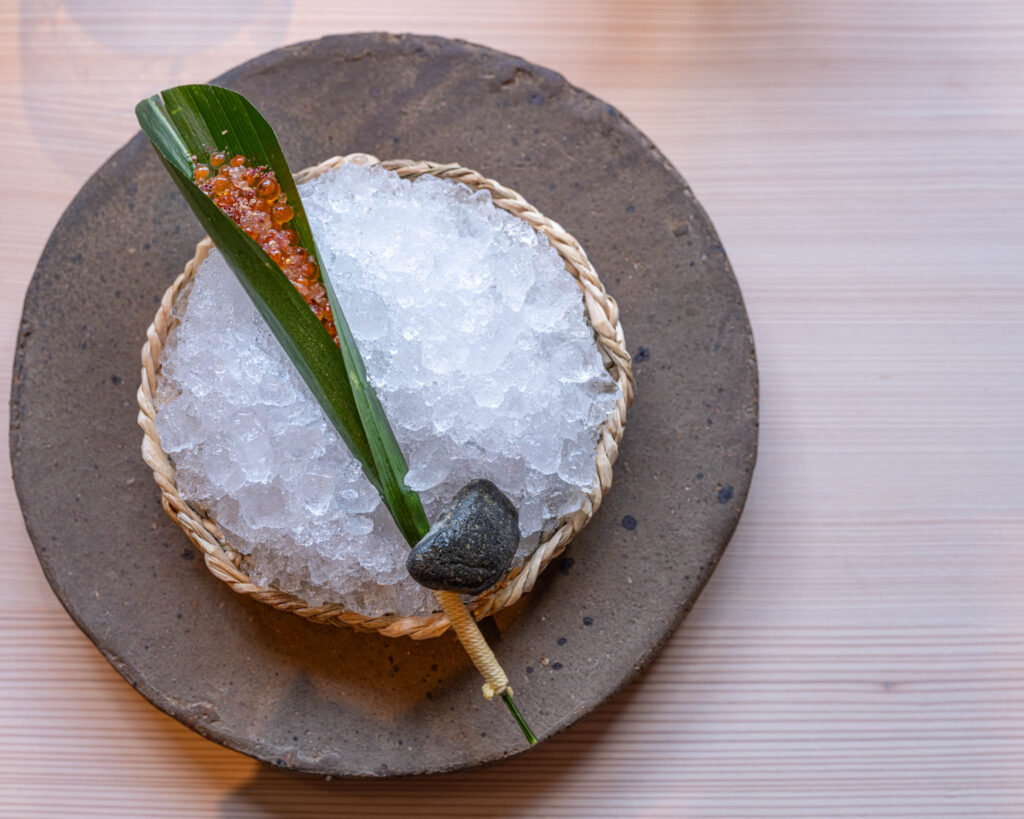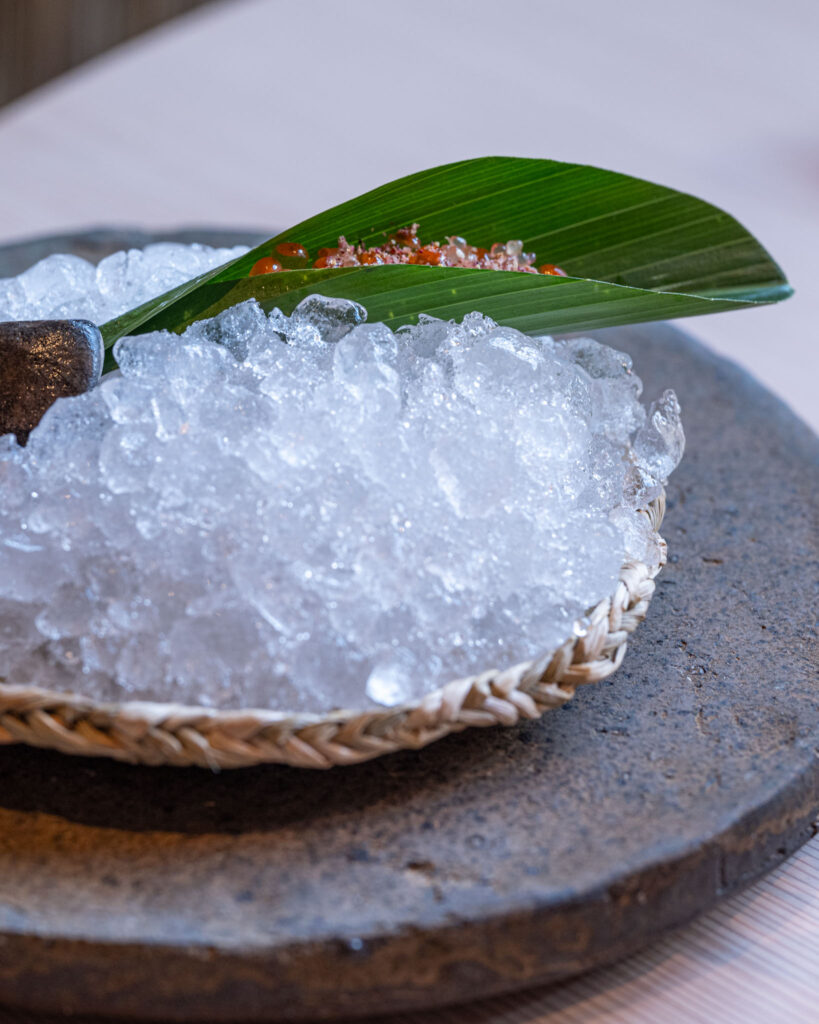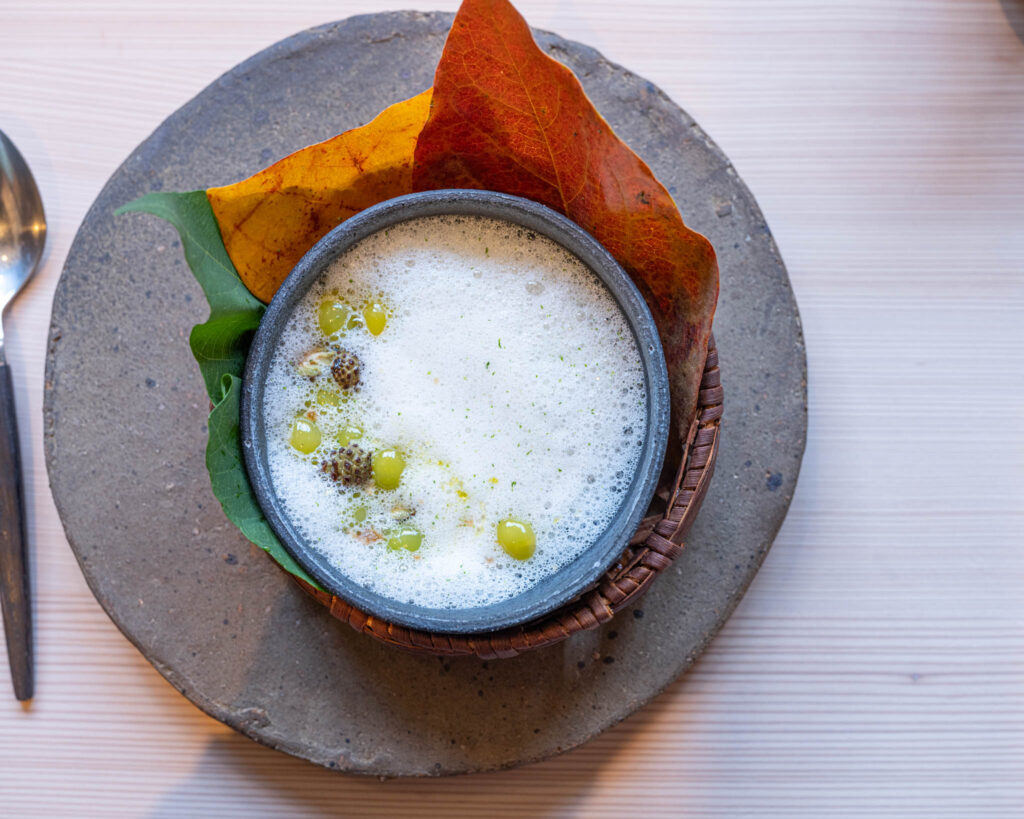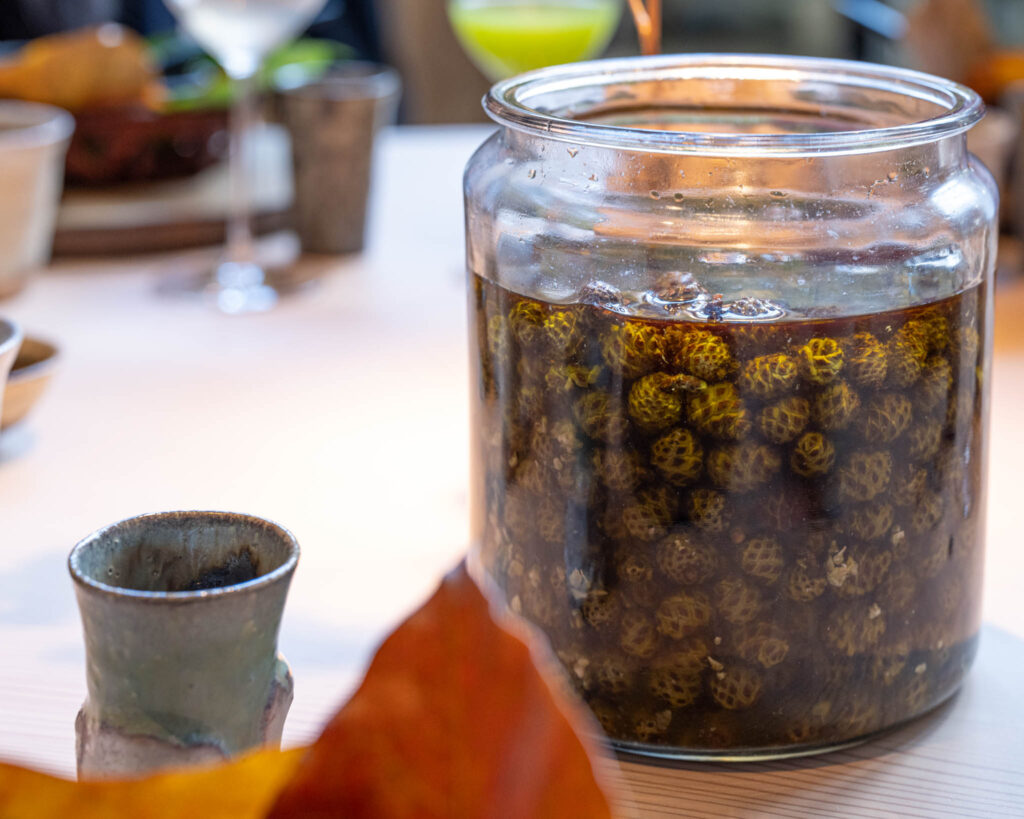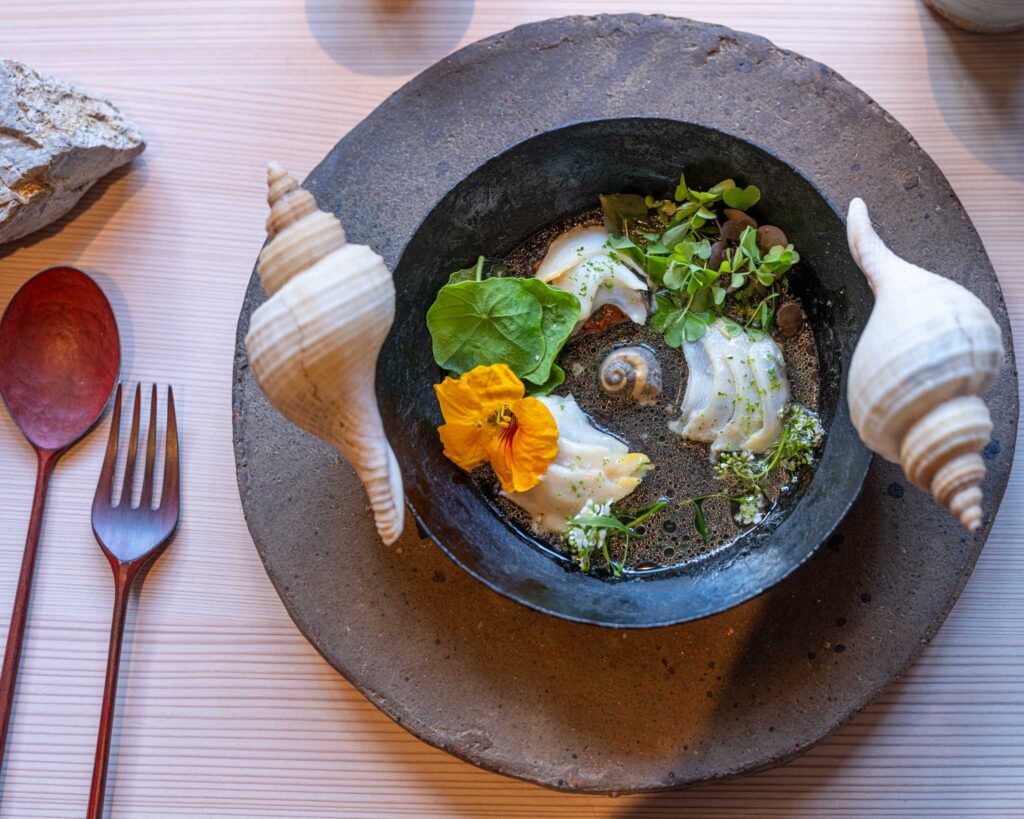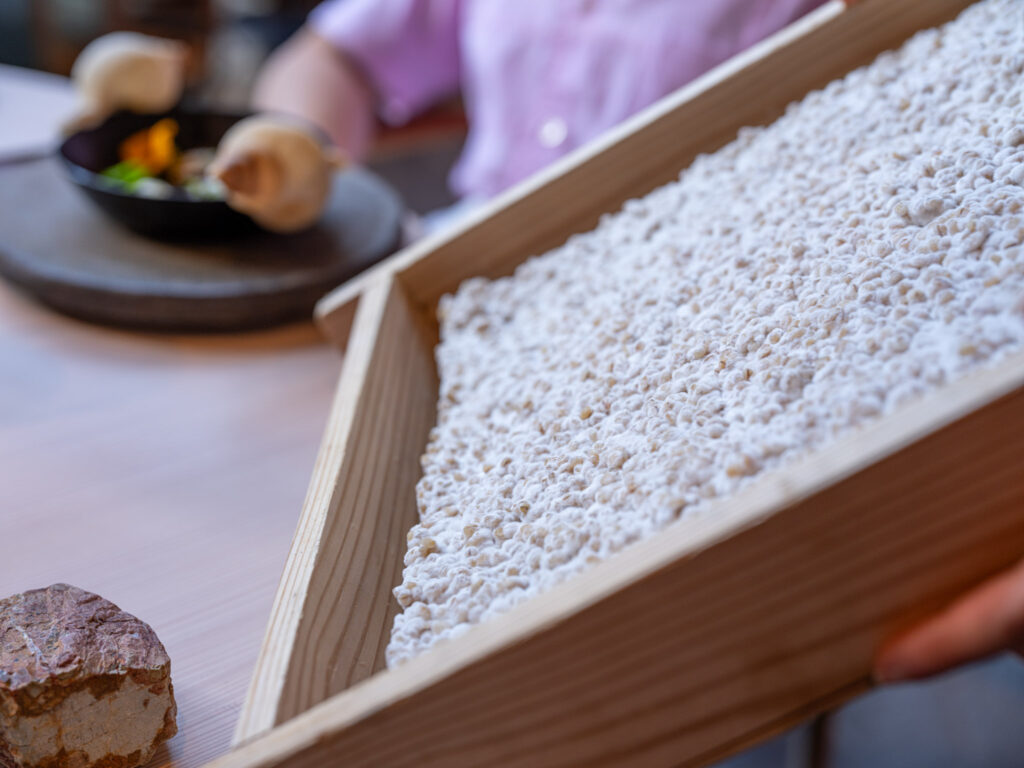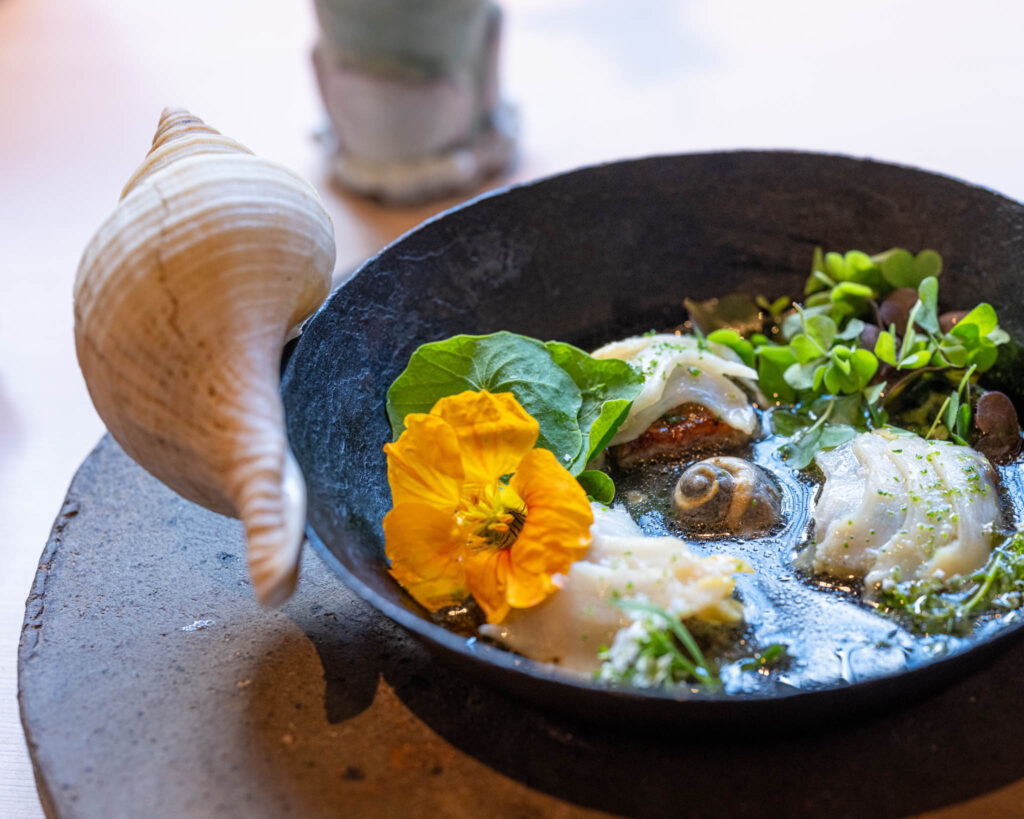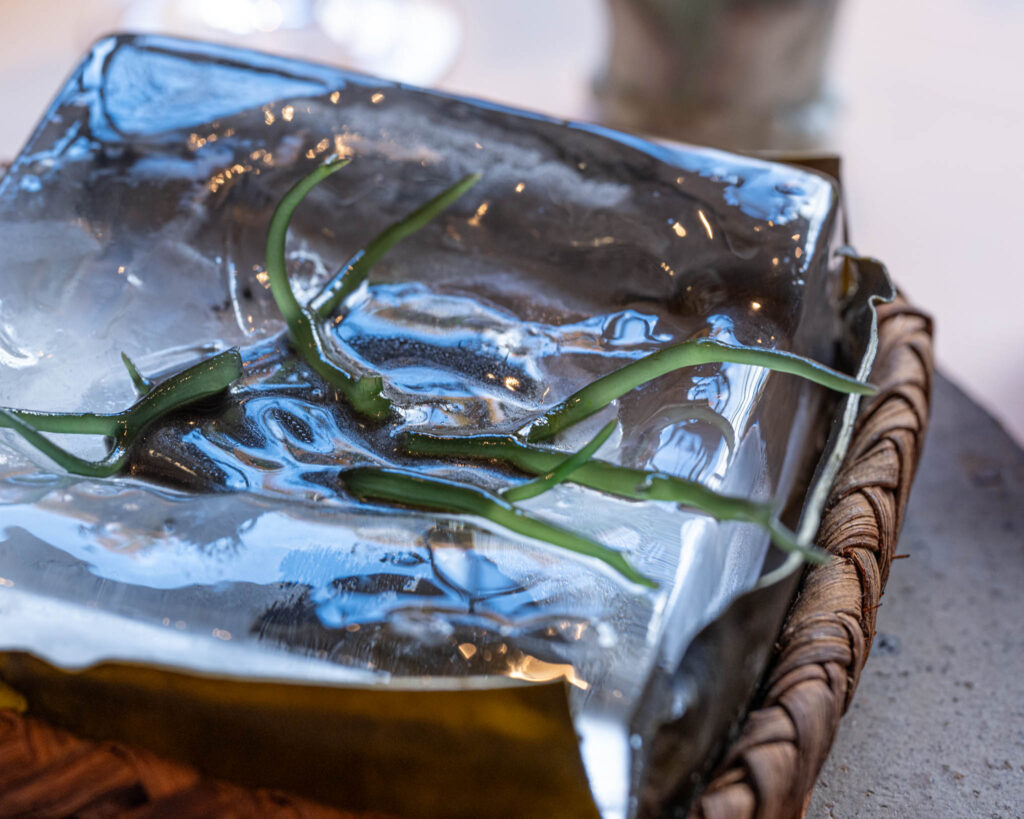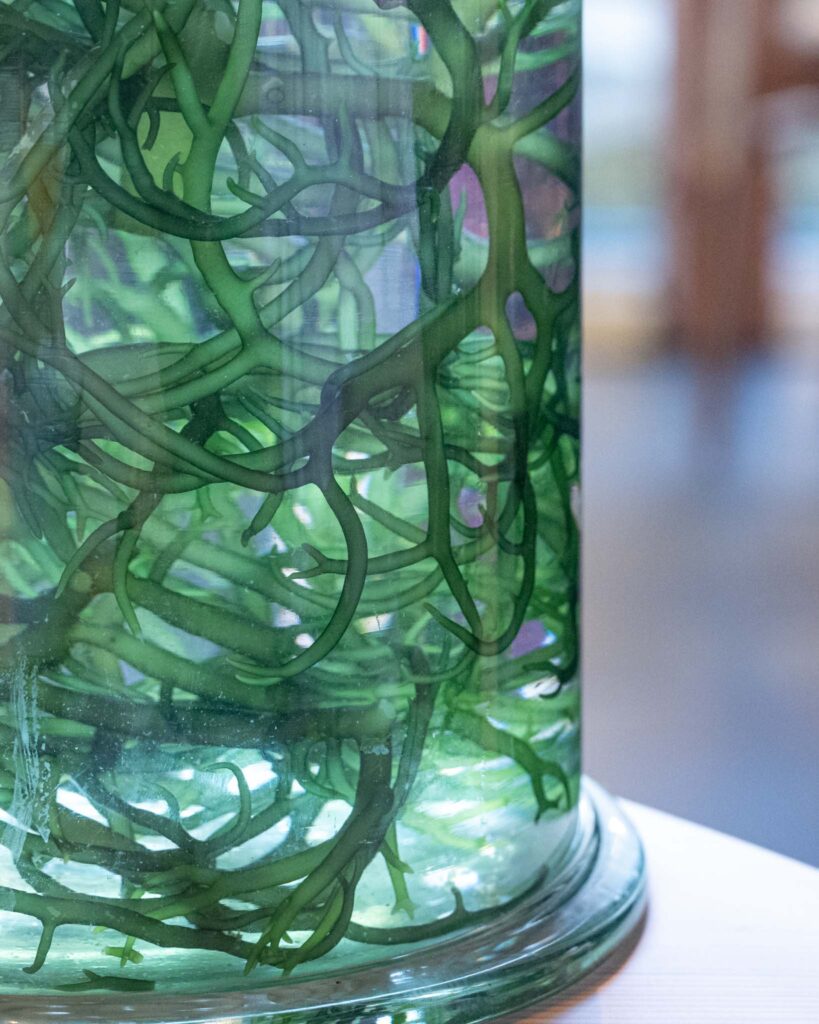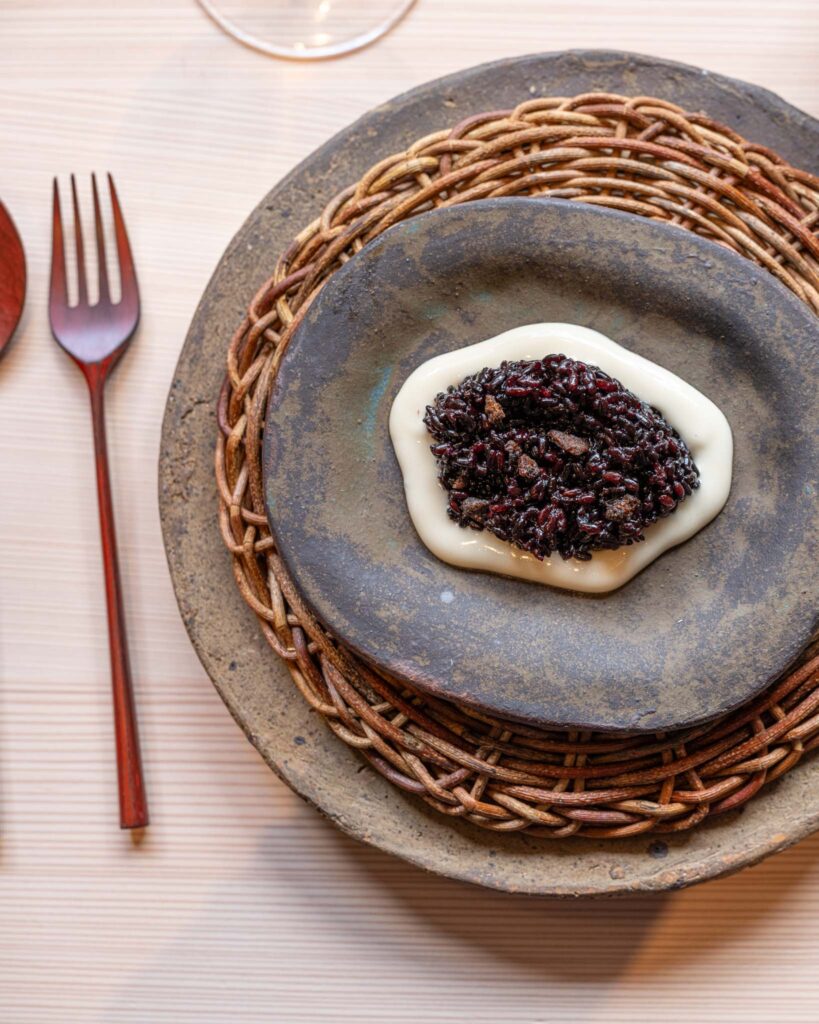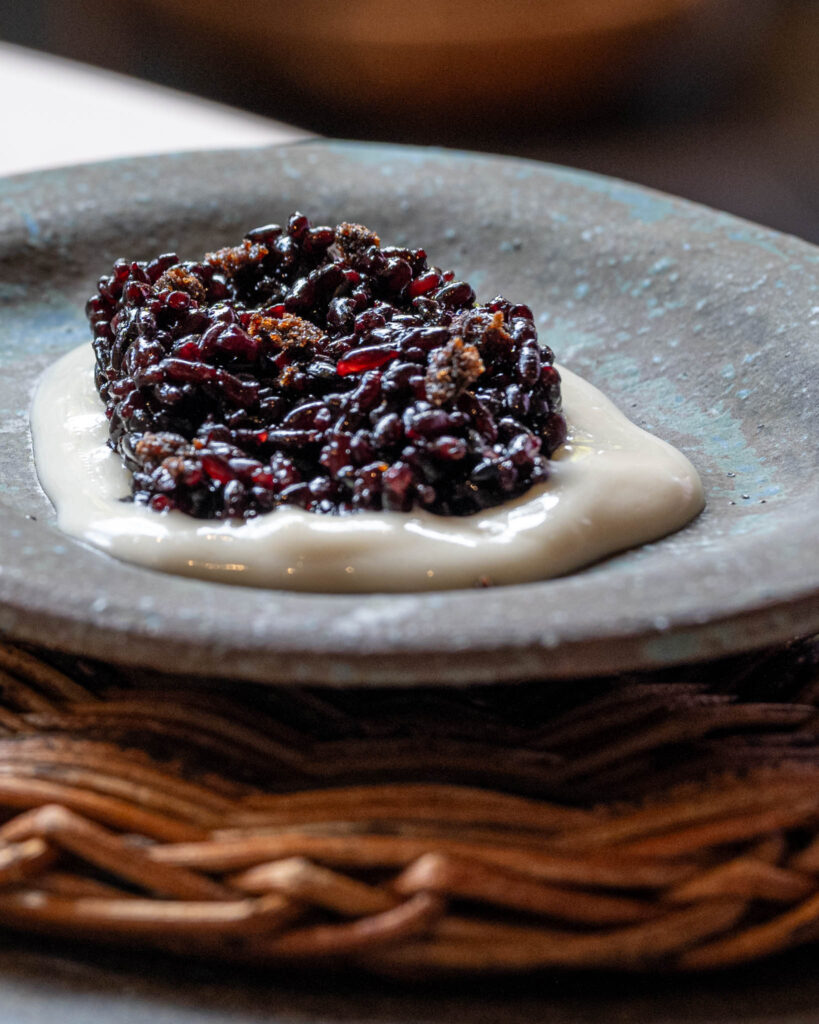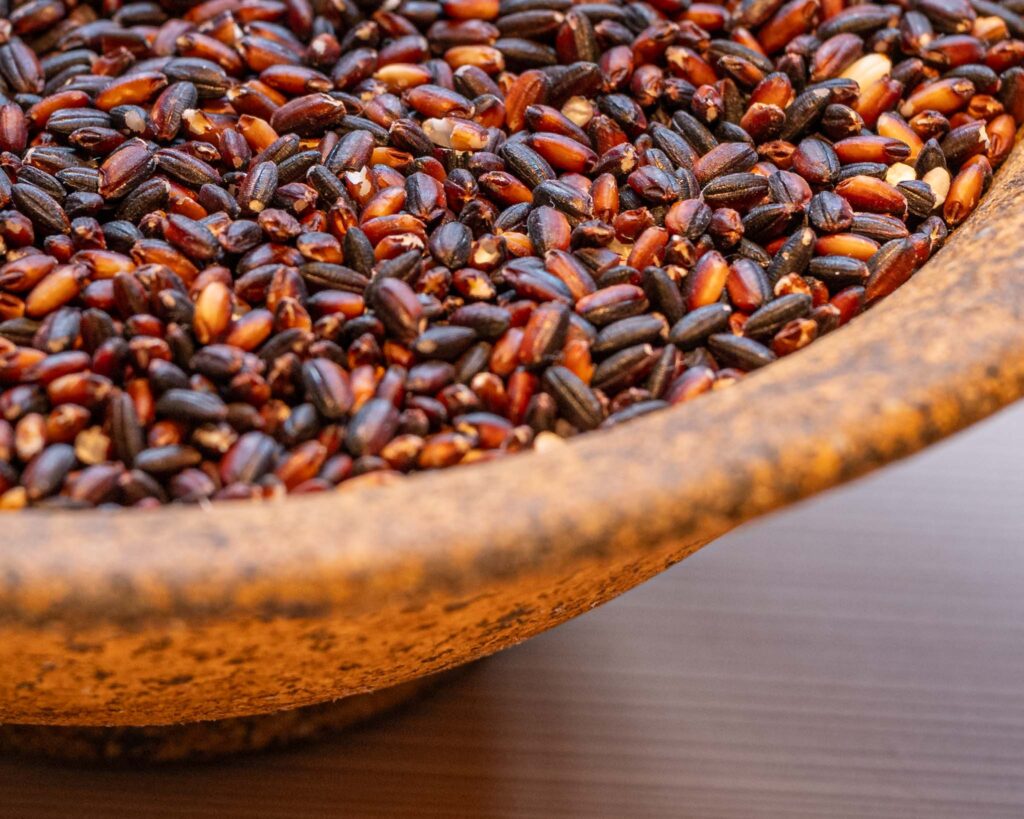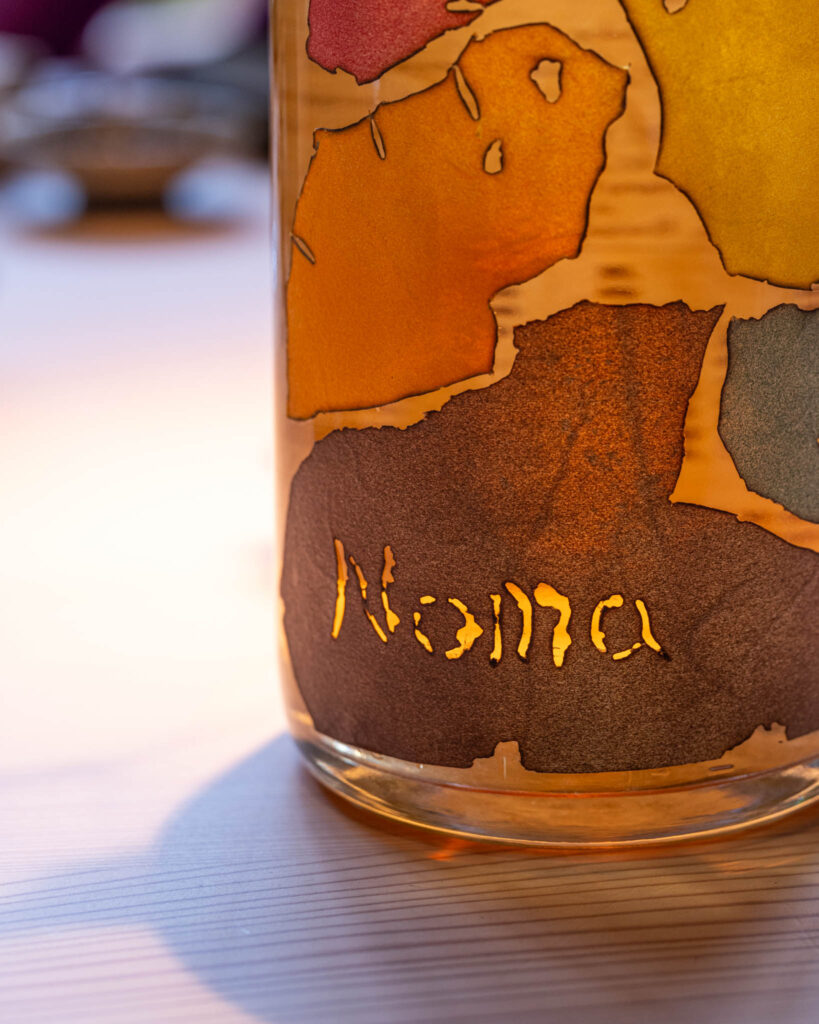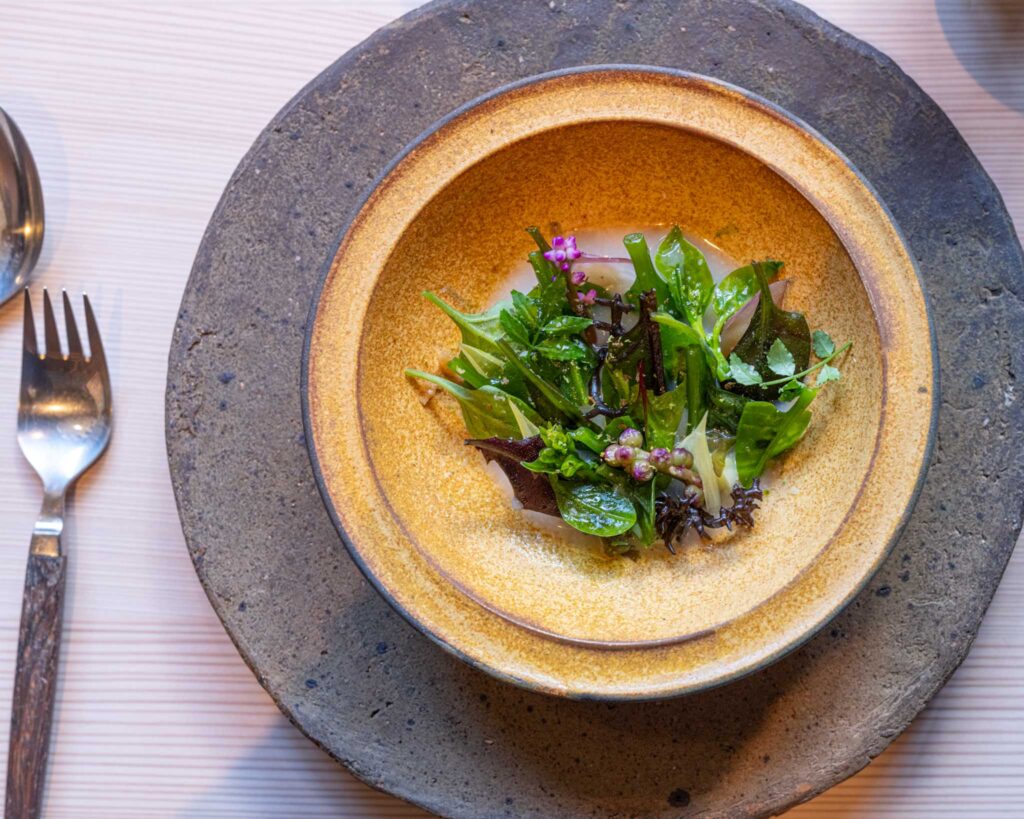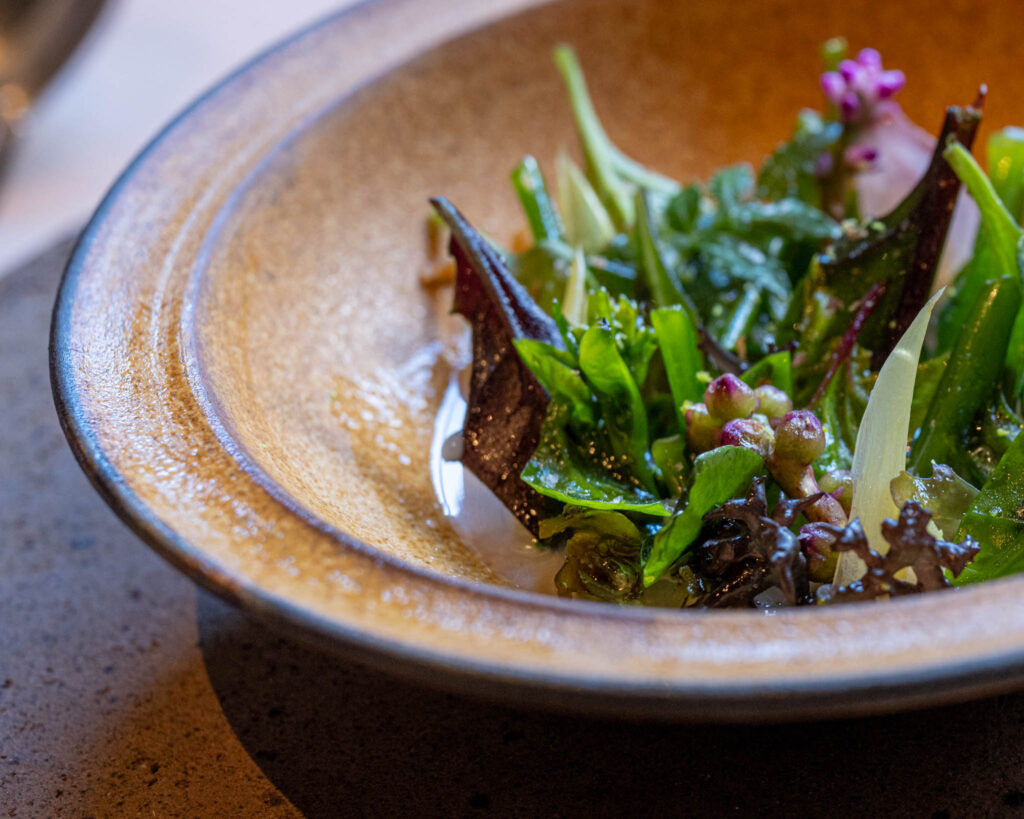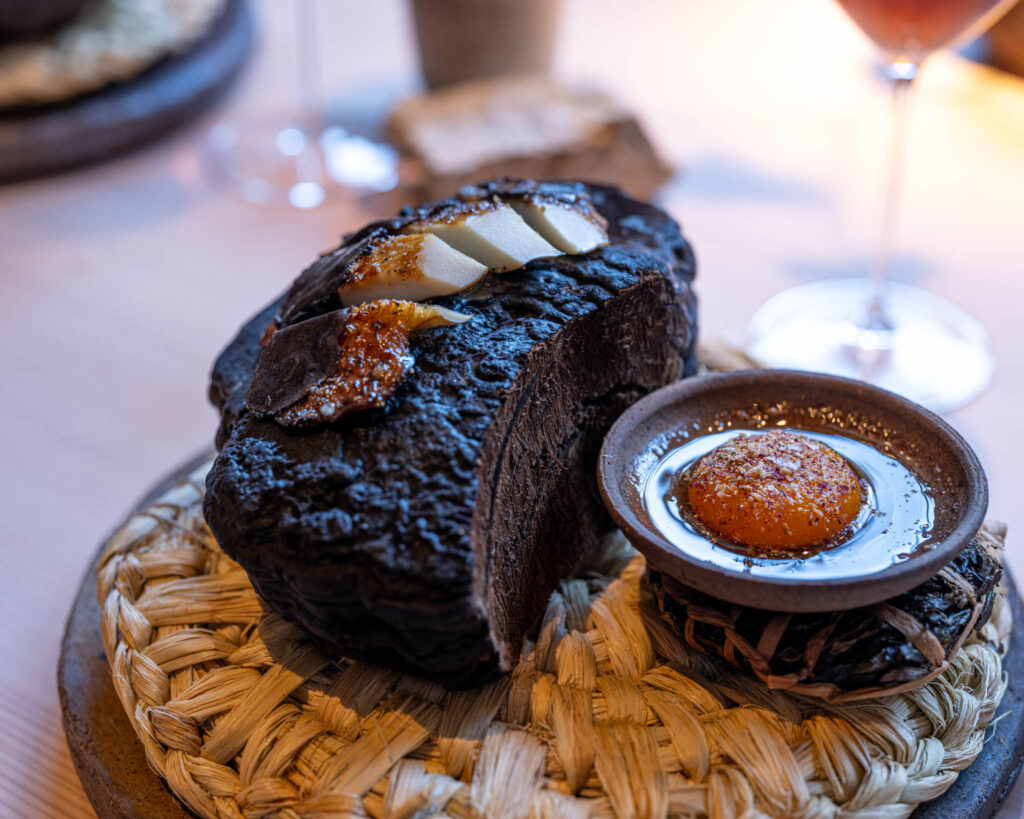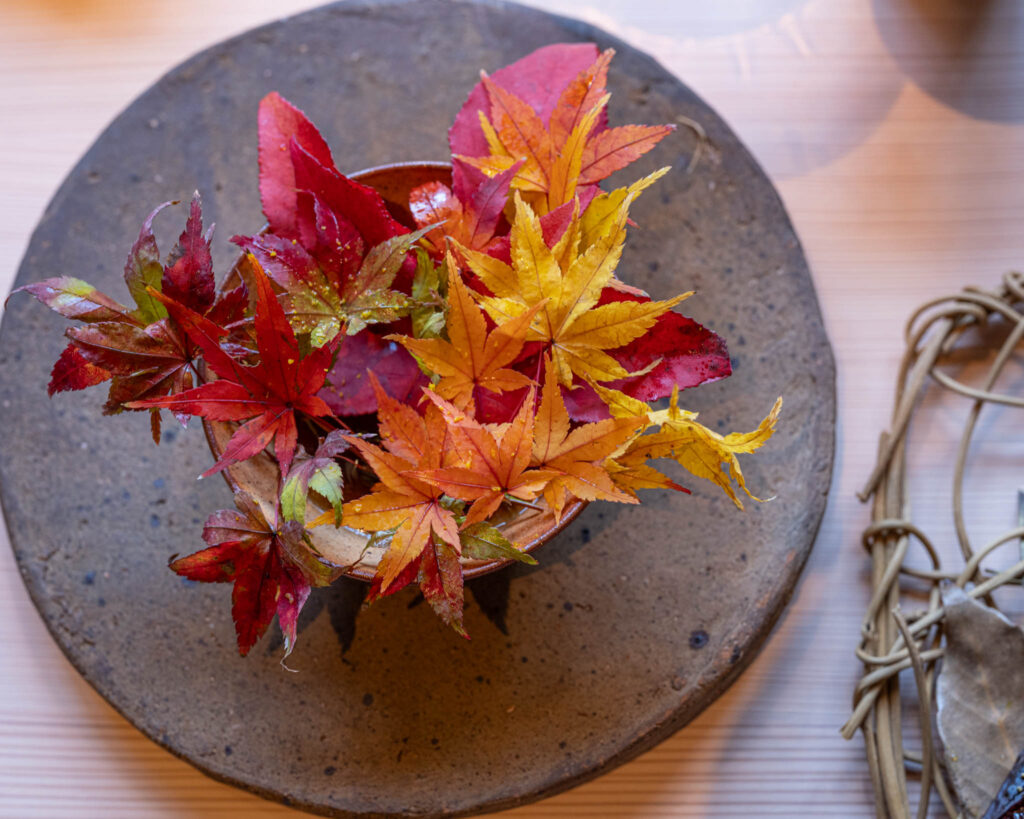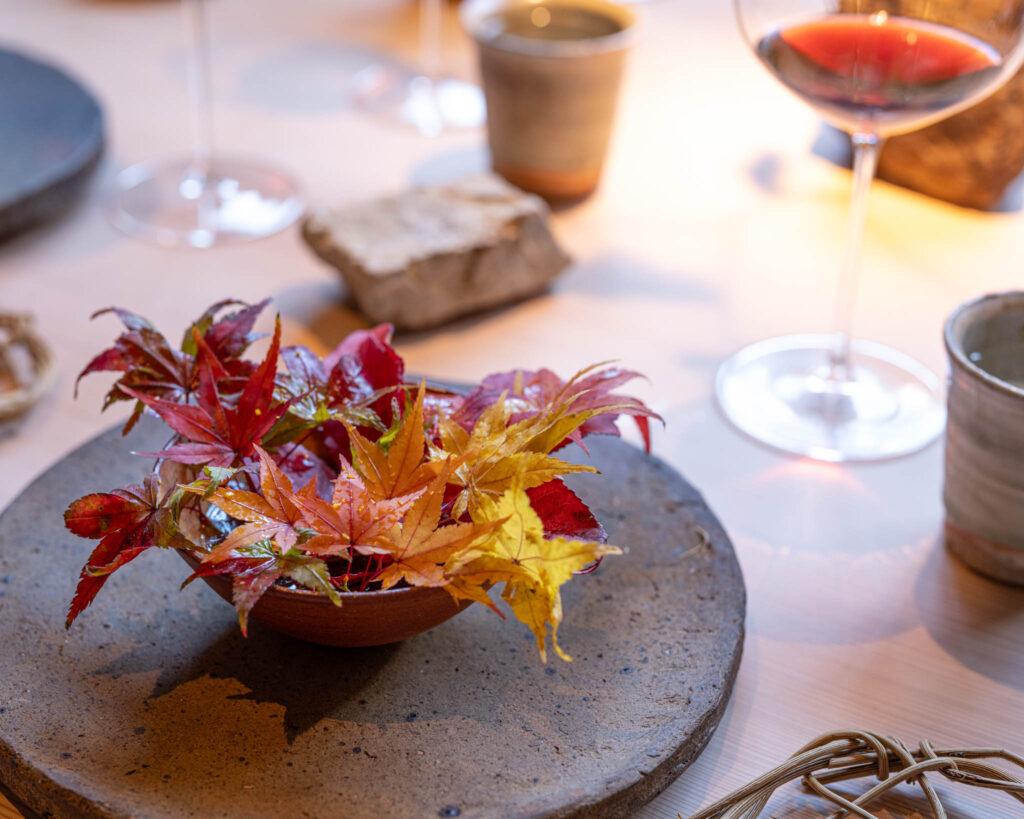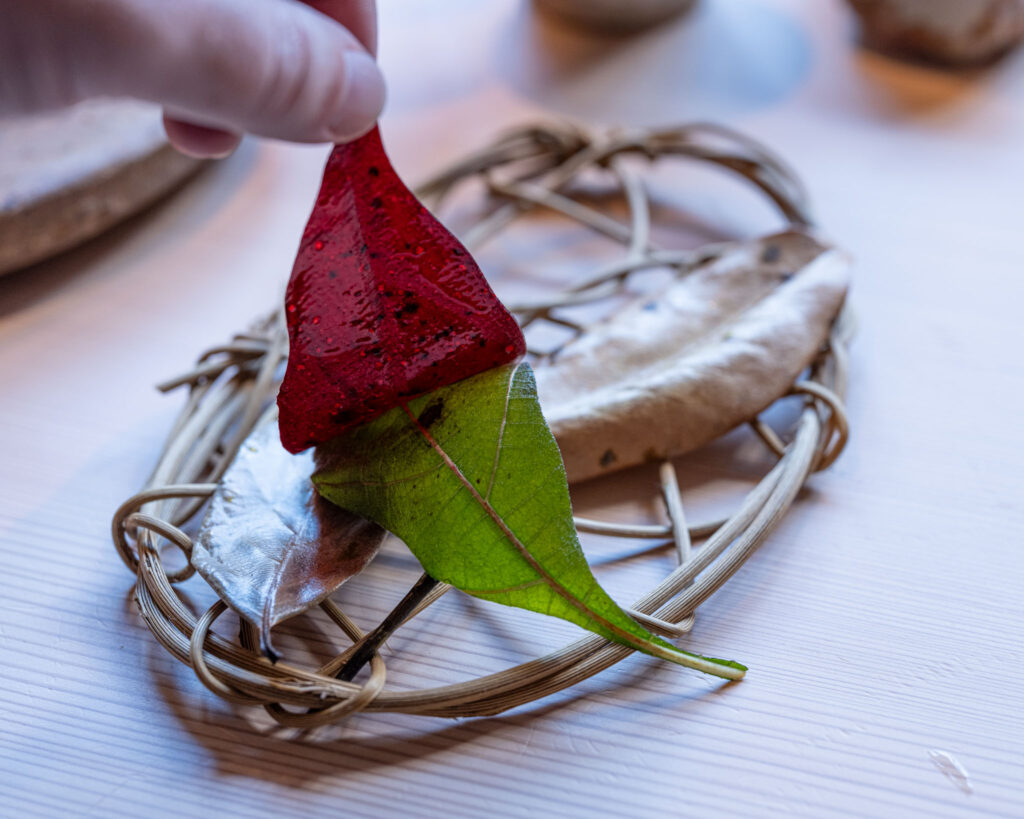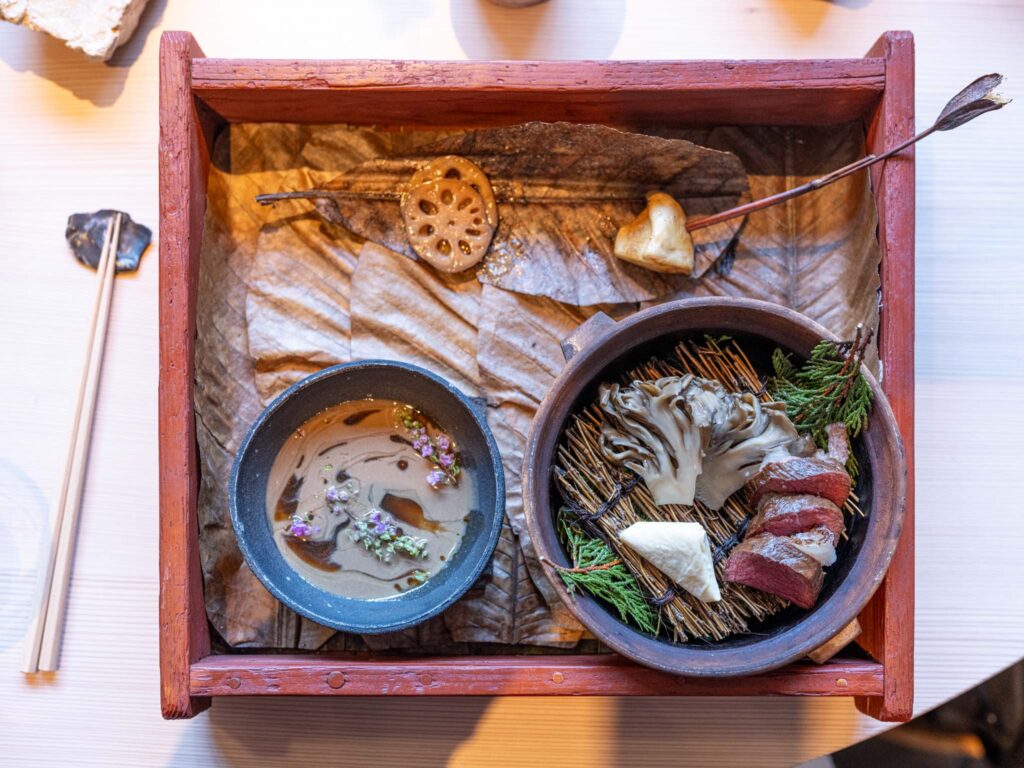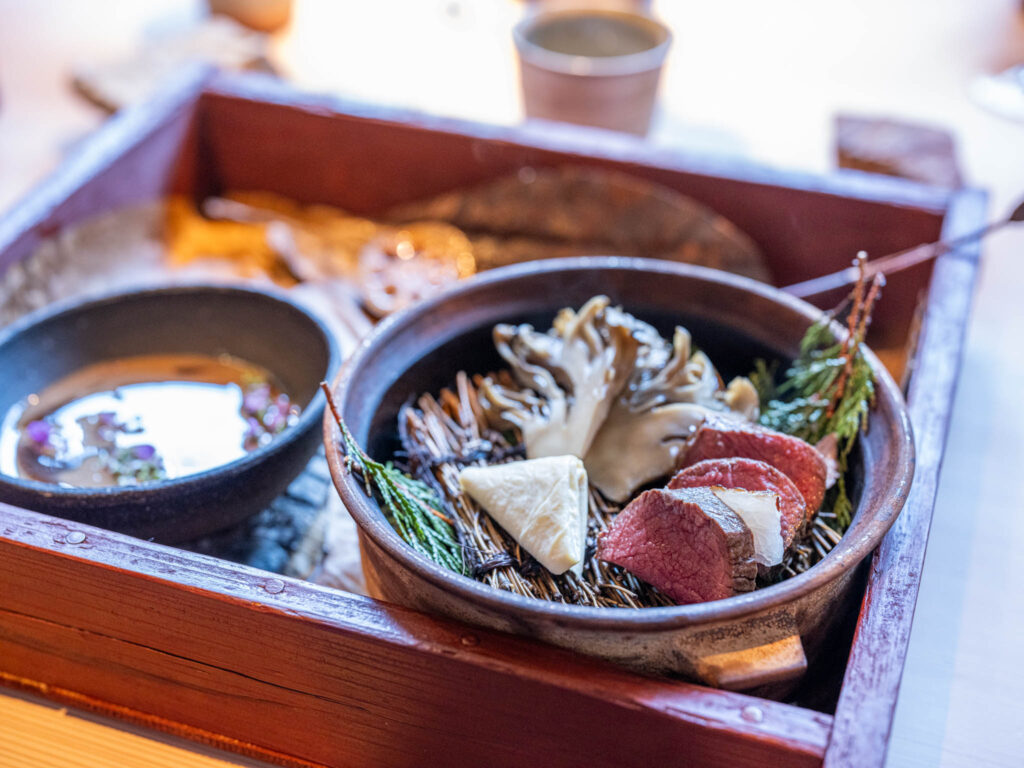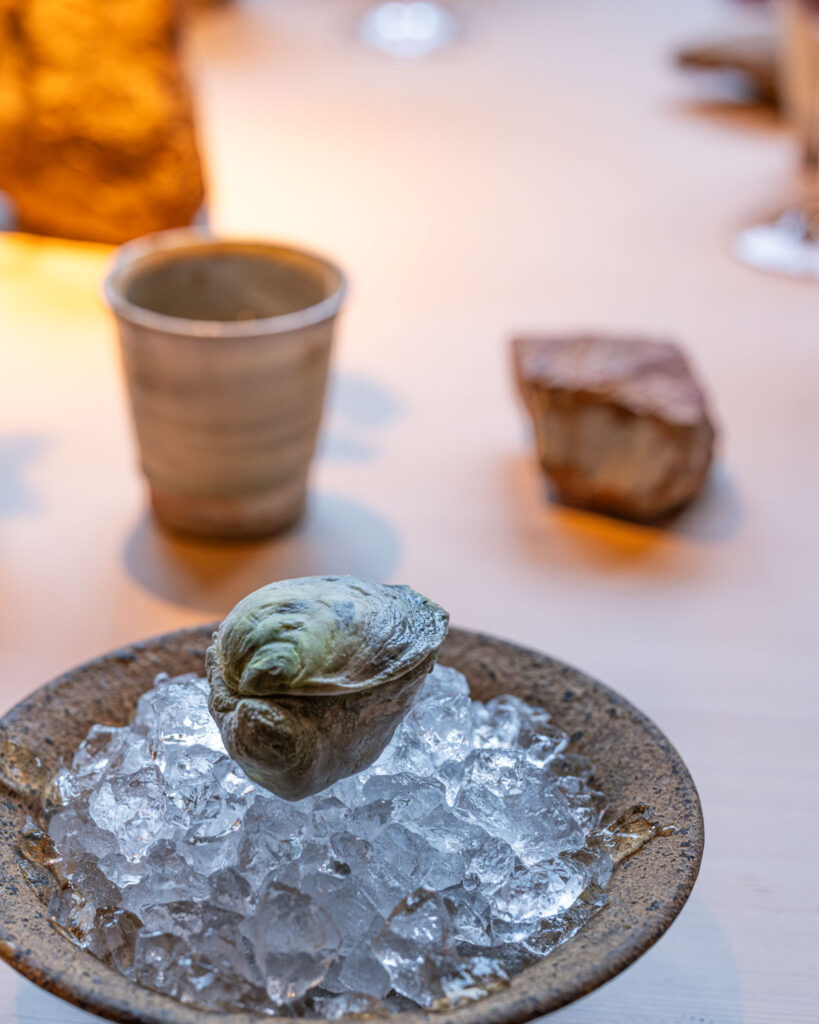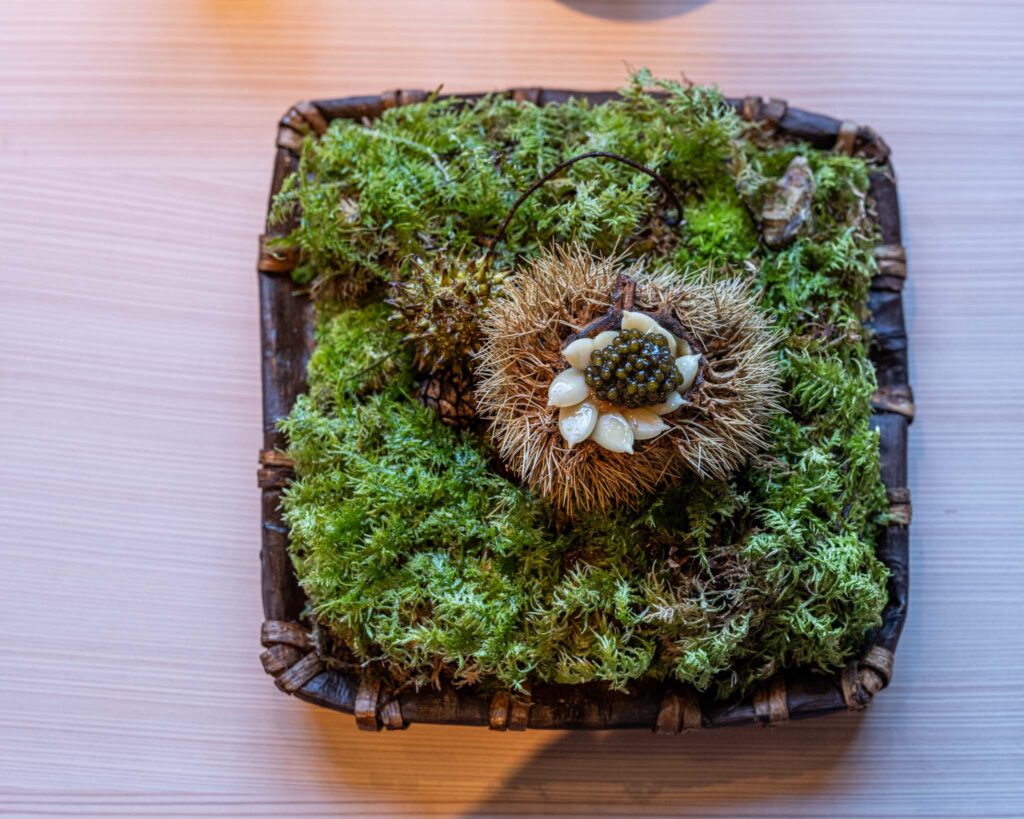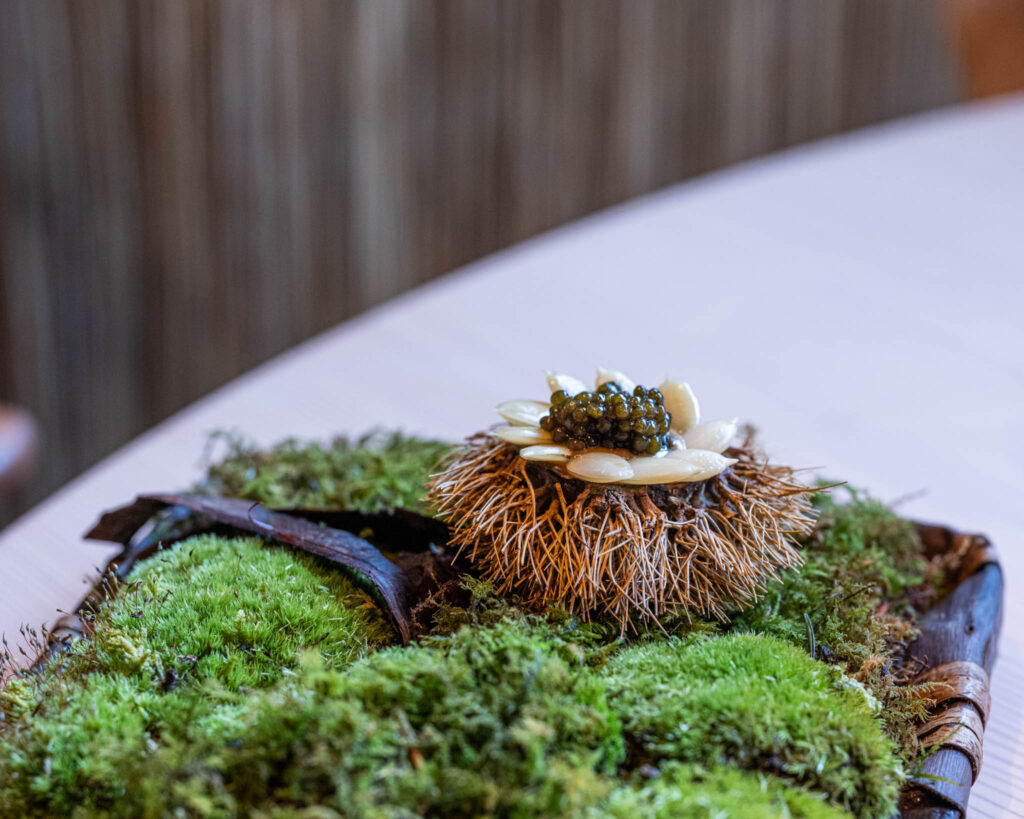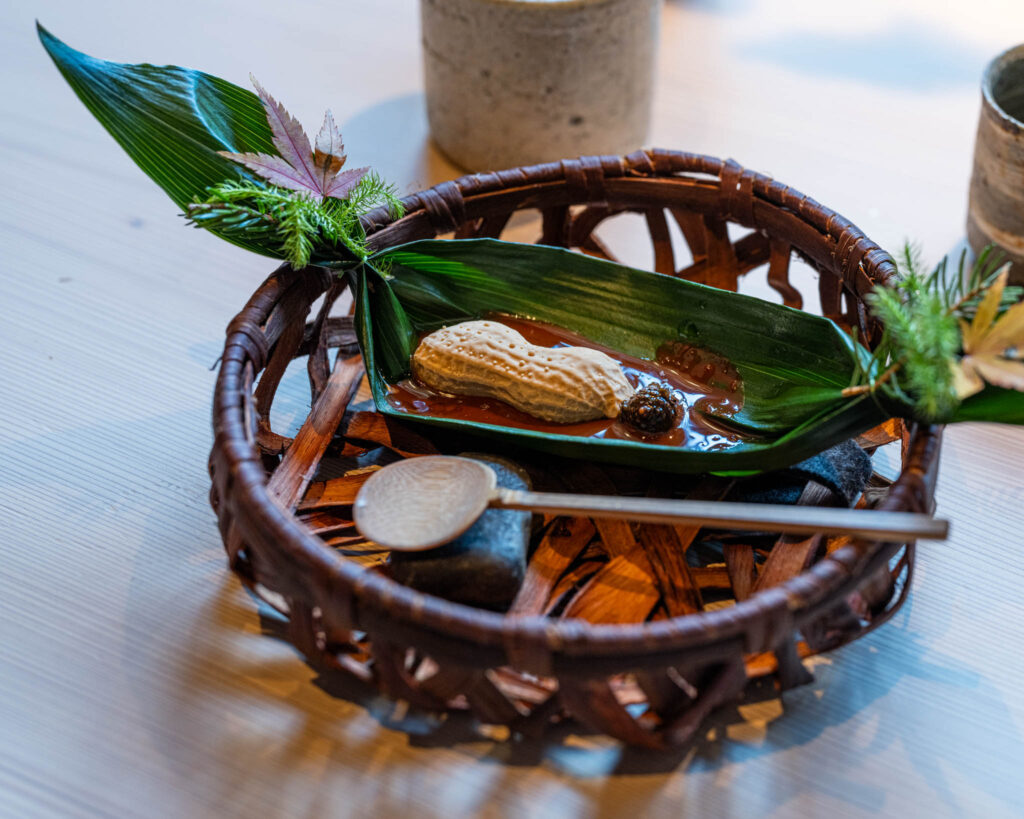noma is one of the best restaurants in the world. I know I know, everybody says that about their favorite place to eat, but it’s not just me saying it. noma has actually won the title of Best Restaurant in the World. And that’s not the most impressive part. They have won it five times.
Some friends and I met in Copenhagen back in September 2022 and had an absolutely unbelievable experience at noma (read that review and see the amazing pictures here). Ok, admittedly part of the disbelief was that we happened to end up there during Vegetable Season and no meat was served, but still it was a great experience!
So did noma (yes, they spell it without the capital N) move from Denmark to Kyoto? Yes. Well, no. But yes. Kind of.
One of noma’s hallmarks is using the environment around them to inform the dishes they create. When you go to their restaurant in Denmark, they will share where each and every ingredient comes from, with some of it even being foraged from very close to the restaurant itself. From time to time, the restaurant takes its entire staff and takes up residence in another location to learn from local traditions and use new ingredients to create a magical experience for their guests. They’ve done these “pop-ups” in London, Tokyo, Tulum, and New York City. In 2023, they announced they would be returning to Japan and doing a pop-up in the historic city of Kyoto.
Some of our same friends made a booking for that Kyoto pop-up, but I was unable to attend, due to a health crisis in my family. I did the right thing by spending that time with my family, no doubt, but I always wondered what I had missed in Kyoto.
And then noma announced another Kyoto pop-up. I had to go.
In December 2024, I did.
noma Kyoto: The Setting
noma chose the same setting as their first pop-up in Kyoto: Ace Hotel Kyoto, a modern luxury hotel along the main stretch of Kyoto about a kilometer north of the main train station.
We walked up to the hotel (I went with a friend of mine who was with me in Copenhagen a few years ago). My buddy had been to the first noma Kyoto pop-up so he was in somewhat familiar environs compared to me just being along for the ride.
I liked how modern the Ace Hotel Kyoto looked, very different from the historic feel that attracts so many to Kyoto.
We ended up accidentally walking into a different entrance and noticed a bunch of random decorations on the floor of the hallway, different elements of the outdoors from the Japanese autumn.
We arrived at the front desk and were told to walk up the stairs where we would be greeted. More outdoor elements.
(I wonder how many times people tried to “clean up” these decorations, also)
And finally we arrived at the greeting area. It’s not at a crowded front desk area or anything like that, it almost felt more like an Apple Store, where a greeter with an iPad checked in each party and invited them to take a seat.
(for those who checked out my noma Copenhagen review, it was very similar to the greenhouse we were in before being invited into the main restaurant)
After a brief wait, it was time. We entered noma Kyoto for an unforgettable experience.
noma Kyoto: The Greeting
I loved just about every dish I had at noma in 2022. What fascinated me the most, though, was how they greeted each dining party. We were stationed in a welcome area (a greenhouse amidst plants we would be eating later it turned out) and, at the appropriate moment, were invited to walk ourselves to the main restaurant. We walked, on our own, into the restaurant…where we were greeted by about 50 staff members of noma. It was like being ambushed with hospitality and it set the tone for the rest of the meal.
I’m a customer service junkie so I’m always fascinated how bucket list places create bucket list experiences like that. Behind the scenes, they just came up with a way of spacing out each party’s arrival in order to arrange for the memorable welcome. It takes less than a minute to greet each incoming party and watching how they orchestrated everything during a busy meal service was impressive, to say the least.
That greeting stuck with me and I was so curious if they would do it again. Sure enough, as we walked through the curtain into the restaurant, I was greeted with the now-familiar sight of most of the restaurant staff there to greet us and welcome us. It made me feel just as special as it did in Copenhagen. (I didn’t get any pictures or video of this because I’m a bad travel blogger, sorry!)
After the greeting, we were sat at a very central table. I was immediately taken by the architectural design of the restaurant, which seemed to blend Danish simplicity with, again, outdoorsy items turned into design elements.
I was told the leaves had gradually changed color throughout the pop-up.
The restaurant was set against a verdant, beautiful setting through the windows, inviting in heaps of natural light and really distilling the theme for us. I love how architecture and design can tell a story, like having elements of the outdoors in the entryways and around the dining area symbolize the ingredients noma would be bringing to their diners from all around Japan. Not just sourced from Japan, but ingredients that were at their absolute best during the autumn season.
The tables hearkened back to noma’s Danish routes, but maybe also a nod to Japan’s legendary woodworking, I thought.
I quickly took my seat with the rest of the mates at our table and before I knew it, the incredible lunch began!
noma Kyoto: The Food
Off in the distance we heard the kitchen workers doing some sort of chant, which I later realized signified the beginning of service. It wasn’t before long that we were served our first dish…which looked like a pile of leaves. The server began their explanation with “this looks like a pile of leaves” and I was excited that we were on the same wavelength.
On the side was a flower dipped into what we were told was a rose butter sauce.
(this is a pretty poor recreation of how richly and detailed the server’s description of each dish was, almost to the level of “this sauce’s mother was a professor at a prestigious university in Japan, etc. etc.”)
Our server explained to us that we were to “forage” for our food through the leaves, as the dish was actually two legs of steamed king crab on a bed of grass. I was particularly glad they said it when they did, because I was fully committed to the idea that the leaves were edible and was about to give one a chomp. To some people this would seem like a bit of a gimmick, but I appreciate how they engaged all of our senses from the very beginning: the sight of the leaves reminding us of what was outside, the fresh scent of the leaves, the texture and feeling of the leaves as we foraged through to find our food, and the sound of the leaves as we worked our way through them. They gave us an incentive to slow down and fully experience the dish.
What about the flower and the sauce, you ask? The flower was our brush to apply the sauce on the crab, obviously.
I foraged my way through the thousands hundreds tens of leaves and found my food.
The crab looked amazing. You know what made it feel even more amazing? That’s right, flower brush.
The first course was a winner, it was time for the next of what would eventually be fourteen courses.
They stayed with the seafood theme for the second course, with a very elaborate serving platter.
What was it? Jellied crab head (!) on a bed of grated almonds served in the shell of a crab. Lots of crab early, I thought.
The textures were crazy though, the green bits added just a bit of tang while the sliced almond had a really nice texture to complement the jelly.
So already we had serving platters of grass, leaves, grated almonds, what would be next?
That’s right, ice.
Placed before us was a plate of ice with a sort of rolled leaf with what looked like small boba in it. The server then presented it to us as a “salmon roe, almost like a fish boba” (nailed it).
The recommended manner of consumption was to simply hold the food end up to our mouths, tilt, and let it all tumble into our mouths (man there were probably 18 more elegant ways of saying that).
I enjoyed this one! It wasn’t just the roe but the seasoning they had on it to give some variety to the textures present.
It was time for the next course, which made me remember when I was four years old and a friend of mine on our street dared us to eat part of a pine cone. I did. It wasn’t enjoyable.
So boy was I excited when they served us a dish of gingko nuts finished in tea butter along with…pine cones. Little edible pine cones.
They preserved the pine cones like you would olives, which made them almost have the texture of an olive, I was so surprised at how good they were! It made me want to go back to Little Me spitting out the remnants of a pine cone all those years ago and say “don’t worry, there is a better pine cone in your future”, which no doubt would have confused Little Me pretty severely but oh well.
Of course, noma is proud of their fermentation and how they preserve and create all of their dishes, and they saw how amazed we were at the pine cones (the poor gingko nuts probably felt kinda one-upped) so they brought out an enormous jar of pine cones in preservation stage for us to ooh and aah over.
So that course had featured something I didn’t like eating when I was a kid, and, sure enough, the next course did too!
Snail. But noma. But still, snail.
This beautiful plate was presented to us with the sea snail in a broth along with barley koji “steaks” fermented and grilled over charcoal. I didn’t know what most of that meant but then they brought over some koji spores growing on barley.
I nodded like “ohhhhhh of COURSE, barley koji!” but didn’t really have any idea what I was looking at. Mold, I was looking at mold. Edible mold, it needs to be said. noma did that to us last time as well. My table mates explained to me that koji is an important part of Japanese cuisine and used in Japanese staples like miso.
Ok, as snails go, this one was excellent. Super super rich, which the broth helped to temper a bit.
As the next course arrived, we moved onward from foods I didn’t like when I was a kid and moved to…another dish served on ice.
So, on this block of ice was a green seaweed monster coming out of the ice to attack us. At least that’s what cropping in really tight on this picture makes it look like. It was live (!) seaweed in a black truffle sauce. They keep the seaweed alive as long as possible before clipping branches off for each dish. I really liked the sauce, the texture of the seaweed balanced it nicely.
And, because I guess we were at a Show The Guests Jars Of Their Food phase of the meal, they brought us a jar of the seaweed.
Up next? Another course that looks great if you want to photography textures of food: kuromai, or black rice, on a sauce made out of squid broth and some koji oil.
They said they had to give us some grains because of how often you see rice and grains in Japanese culture.
It was another example of a dish that sounded simple but was awash with complexity. There was so much depth to the flavor of the sauce!
And then of course they brought a bowl of the black rice for us to see. I never got tired of seeing the ingredients like this because at some point I knew that the chefs and wizards at noma looked at those same ingredients and began a journey that took them to the dish in front of us. It also makes for a great photograph.
I had lost count of the number of courses we had by that point. Partly because trying to keep up with it was mentally exhausting and also because the wine/sake pairings were awesome.
The next course was presented to us and it was a vibrant salad of myoga greens in an amazake sauce.
The sauce was absolutely wonderful, with citrus and acidic notes that complimented the textures of the greens really well. At that point in the meal, I wasn’t sure if I had tasted anything better!
Ok, so remember last time I went to noma how I mentioned that I really dislike mushrooms? And then had the cringe of a lifetime when the main course of that meal was Lion’s Mane mushrooms but I soldiered through anyway? Well, it wasn’t lost on me that Japanese cuisine features a lot of mushrooms. And even if it was lost on me, I would’ve found it quickly because the next course was mushrooms on mushrooms on mushrooms.
Literally…like mushroomception.
It was grilled abalone mushrooms with slices of black truffle atop a plate of another giant type of mushroom (we didn’t eat the big mushroom). The sauce was egg yolk mixed with shoyu.
The truffle wasn’t overpowering like I normally find it to be (I think truffles are overdone a bit these days) and the mushrooms were really good. That said, they were still mushrooms, so ick.
The SAUCE though. Good grief. They could have just brought out the sauce and I would’ve been happy.
I was getting Main Course vibes, but I was a little early. One more course before showtime, and this was a bit of a palate cleanser that hearkened us back to olden times about an hour before when we were served a plate of leaves for our first dish, although this time it wasn’t a plate of leaves.
It was a forest broth made of…you guessed it, mushrooms infused into a dashi.
We didn’t have to forage through the leaves to find the forest broth, we were encouraged to just stick our noses in the leaves as we drank the broth. It was delicious and I loved that we had to drink it the way we did, it sounds a bit hokey but it worked, reminding us of the setting, place, and theme of the meal.
Along with the forest broth was a serving of fig leaves. One leaf looked normal, the other looked like it had something on it. It did. It almost looked like leather, but in reality was a fruit roll-up of sorts made from haskap berries. We peeled the leather from the fig leaf and ate it between sips of the forest broth (pretty sure that sentence has never been said).
This was the only dish that kinda felt out of place. It was really good, not too sweet, but it just didn’t feel as incorporated into everything else as the rest of what we experienced. Overall, the course worked as a palate cleanser and/or harbinger of what was to come, the main course.
And the first time I had non-seafood meat at noma. And somehow more mushrooms.
The dish was a wild deer hot pot. The venison was aged for 12 days and roasted over charcoal and it was accompanied in the dish by soy skin (which would be a good name for a punk rock band) and, yep, matsutake mushrooms.
The sauce was just sublime, made from sunflower seeds and shiso. The yuba (soy skin) was juicy and surprisingly good while the venison (which had layers of the fat cap between the slices) was heavenly. It was cooked perfectly and the sauce just tied it all together so well.
Would love to say how courageous I was with the matsutake mushrooms, but I had a couple of bites and decided I was good. I felt like my body composition was about 12% mushroom by that point in the meal and decided I had mushed enough rooms for a bit. The lotus blooms weren’t bad though.
I’m sure you’re thinking exactly what I was thinking at that moment: when was I going to be served something else on ice?
Worry not, because dessert was about to happen. The first dessert course? You guessed it, an oyster?
Not just an oyster though. We were told to just go for it and bit into it, shell and all. It turns out the oyster was completely edible and made of ice cream (with the accent colors being a mix of matcha and seaweed powder) and had a variety of sweets inside of it. I wish I would’ve gotten a cross-section of the oyster after my first bite, but it was just too good and was over before I realized it.
It was getting close to Christmas at the time, and I hadn’t roasted anything on an open fire in a while, so I was excited when the next dessert course was brought out: chestnuts.
There was no roasting these chestnuts. There WAS, however, caviar on them. Because obviously we needed to have caviar for dessert. There was a beautiful sauce underneath the chestnuts as well. I may have liked this more than the oyster!
It was sadly time for our last course. From ice plates to jars of food to more mushrooms than a person should personally witness in their lifetime, it had been a grand culinary adventure through the soul and tradition of Japan.
noma proudly takes what they learn from each city they visit and incorporate those lessons into future dishes. The final course was peanut ice cream and Mexican chocolate, which they learned to use during their residency in Tulum.
The dish was seasoned with elderflower and, for a final finishing touch, a candied pine cone. A perfect finish to a wonderful meal.
noma Kyoto: the Price
So what was the grand total for this amazing experience, bearing in mind I still had to get to Kyoto from Australia? $1000 US Dollars. Yikes.
Was it worth it? That’s all on a spectrum, honestly. I could afford it once, but not once a week or even once a month. From that perspective, I thought it was worth it, a bucket list experience that I will remember forever.
And hey, I get it, spending $1000 on a meal is not something everyone can do. It was an indulgence, 100%.
noma Kyoto: the Final Thoughts
noma does it well. The food is some of the best in the world, no question. They have a culinary standard to live up to and they take it seriously.
What continues to impress me the most, however, is the customer service throughout the meal. The noma staff were seemingly given free reign to do what was necessary to make our experience even better, so if they noticed we were surprised by a particular dish, they would run over and grab the bowl of ingredients to show us. Their knowledge of the culinary teachers they learned from all around Japan was vast. In short, they were as prepared on the customer service side as the chefs were in the kitchen. At the same time, it wasn’t pushy. We were not rushed. It was almost as if they let each table run their own show while being gently guided along by the noma team. I’m enough of a customer service junkie to know just how much practice, planning, and coordination it takes to pull that off, and they were flawless.
noma is currently doing a few more seasons at their restaurant in Copenhagen before dramatically reinventing themselves. The world is waiting for what is next from Rene Redzepi and the wizards at noma and I’m sure I’ll be there when they finally unveil it. If you can get there and the money makes sense, go do it. Especially if you like mushrooms.

